Nagorno-Karabakh
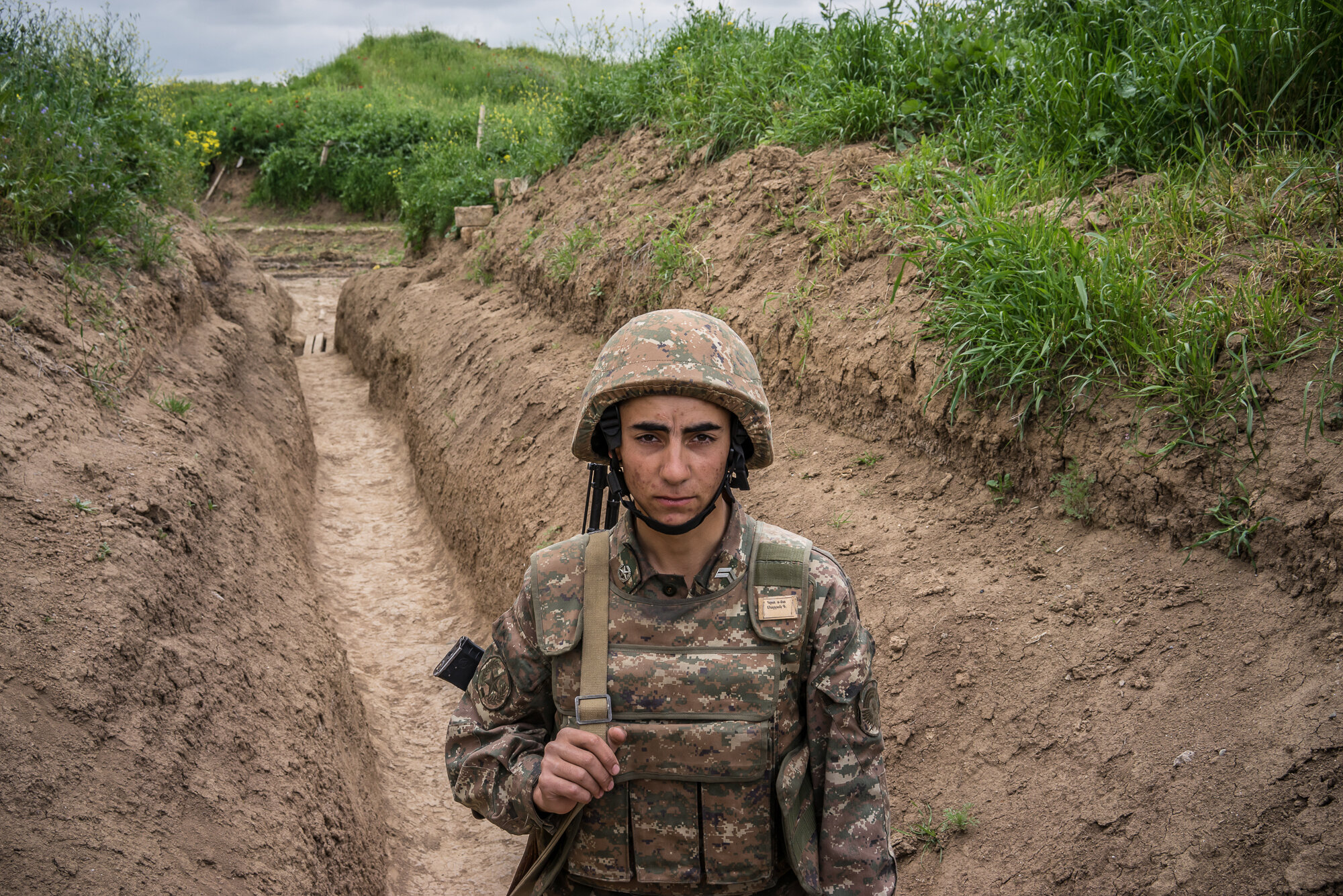
A member of the armed forces of Nagorno-Karabakh at a post along the line of contact with Azerbaijani forces in the eastern direction. Near Agdam, Nagorno-Karabakh. 2015.

Residents shelter in a basement as air raid sirens sound. Stepanakert, Nagorno-Karabakh. 2020.
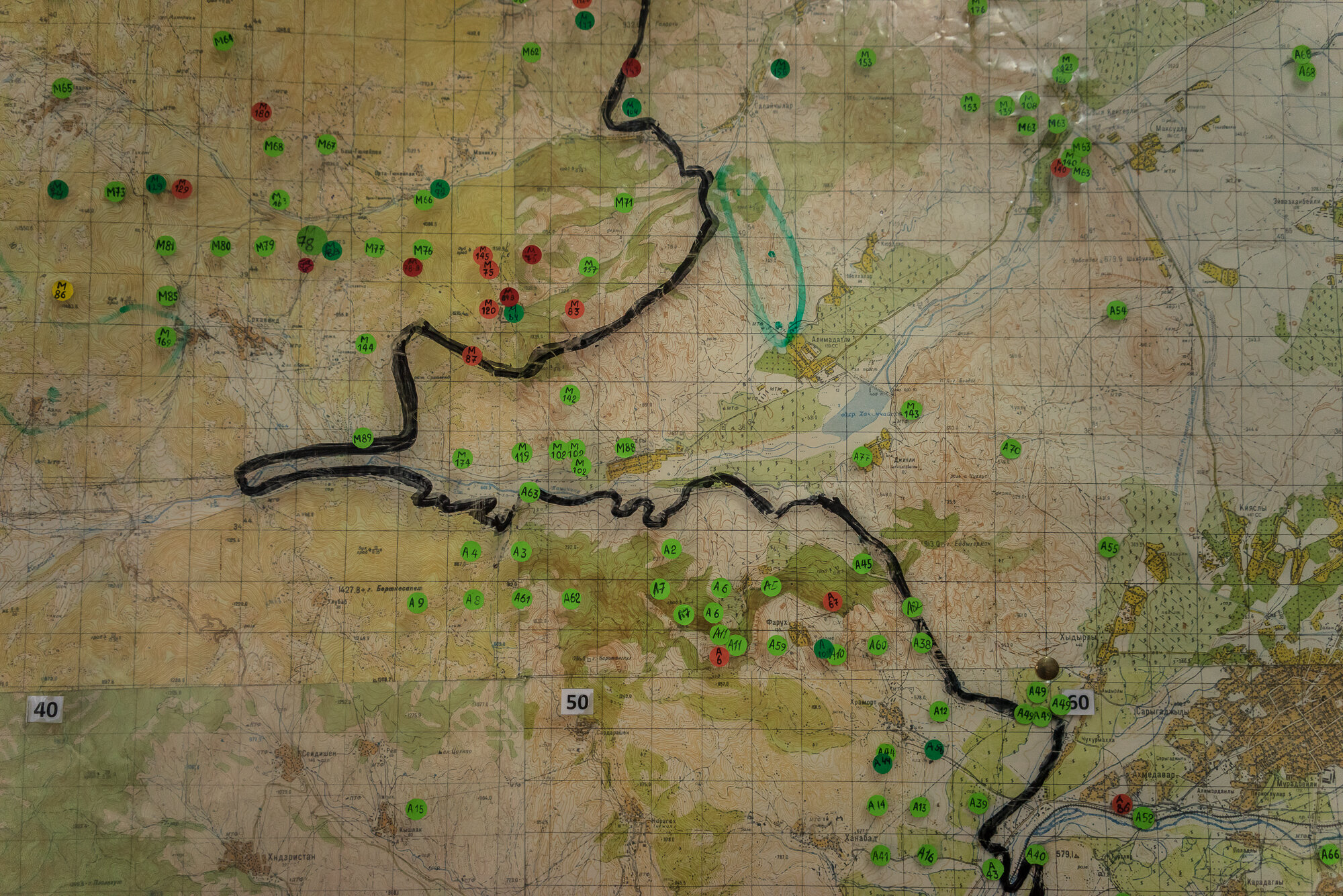
A map showing the locations of already cleared minefields, marked in green, and minefields yet to be cleared, marked in red, at the offices of the charity HALO Trust. Stepanakert, Nagorno-Karabakh. 2015.
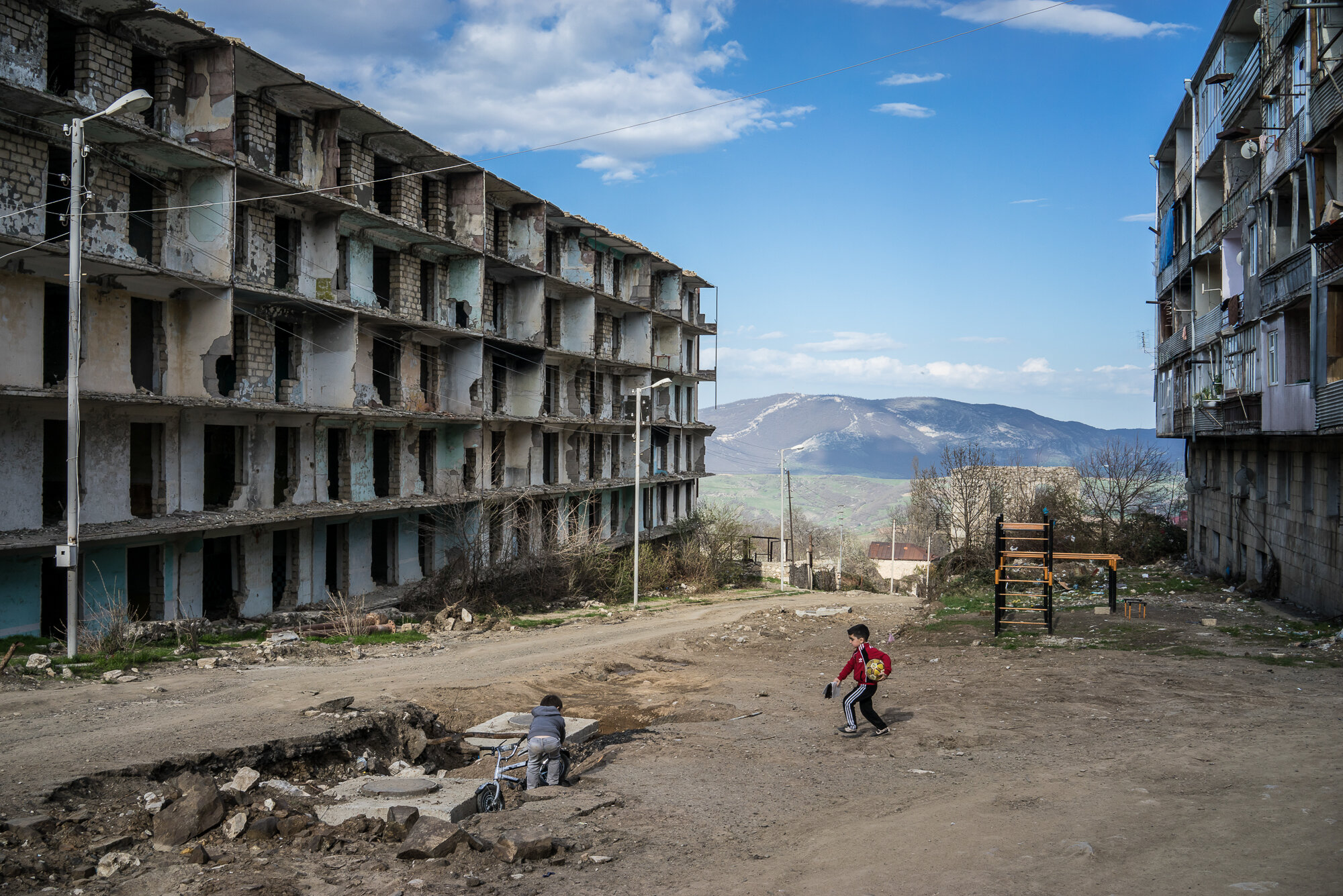
Boys play on a street next to a building destroyed by war more than twenty years earlier. Shushi, Nagorno-Karabakh. 2015.

Workers at the Karavay bakery watch an online video report about the ongoing war during a break from baking bread for members of the Armenian military in the front-line city of Martakert. Stepanakert, Nagorno-Karabakh. 2020.
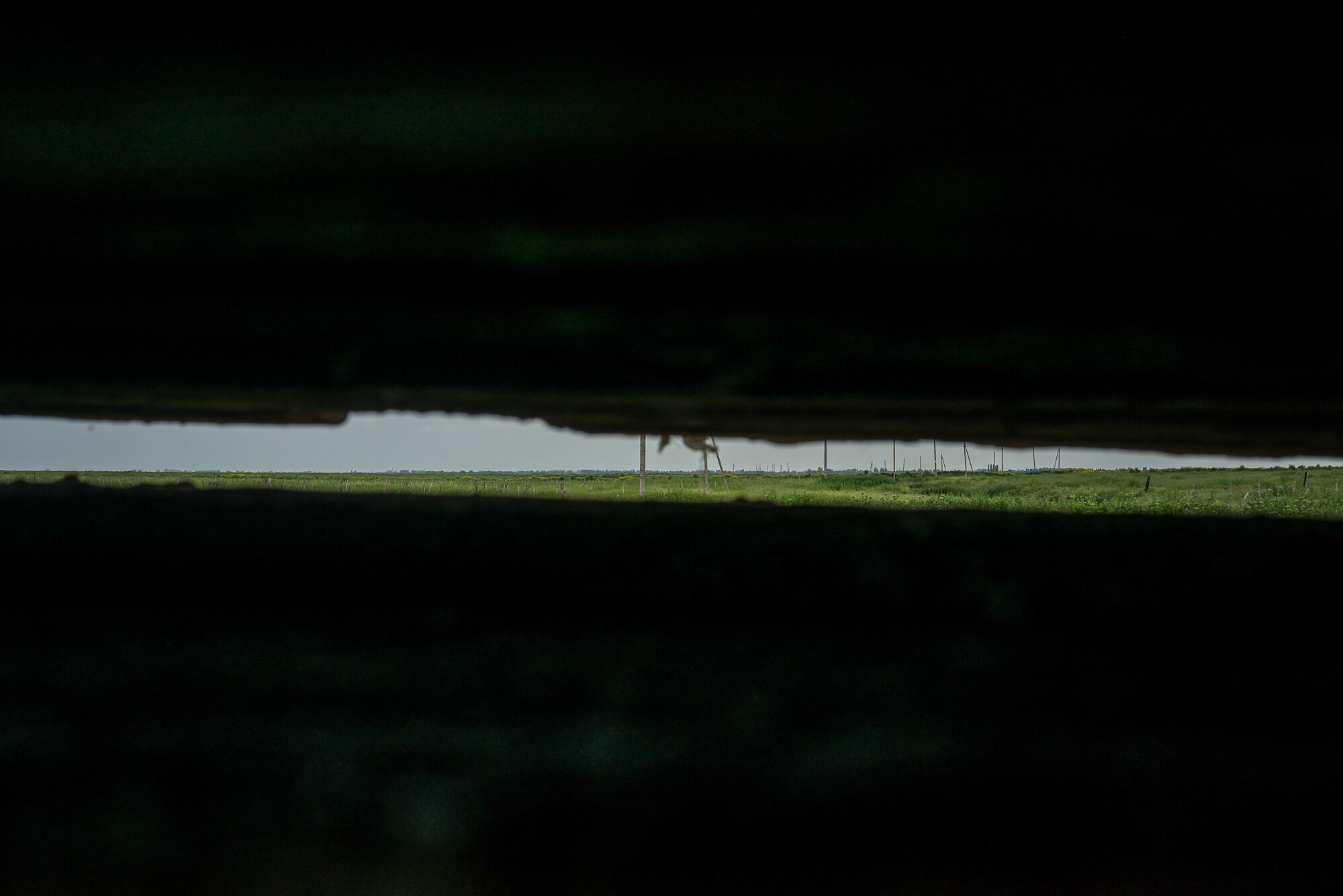
A view toward Azerbaijani military positions from a post of the armed forces of Nagorno-Karabakh along the line of contact in the eastern direction. Near Agdam, Nagorno-Karabakh. 2015.

Harut (L), and Sevak (R), both Armenian soldiers who did not want to provide their last names after being wounded in fighting in previous days, sit in their hospital room. Stepanakert, Nagorno-Karabakh. 2020.
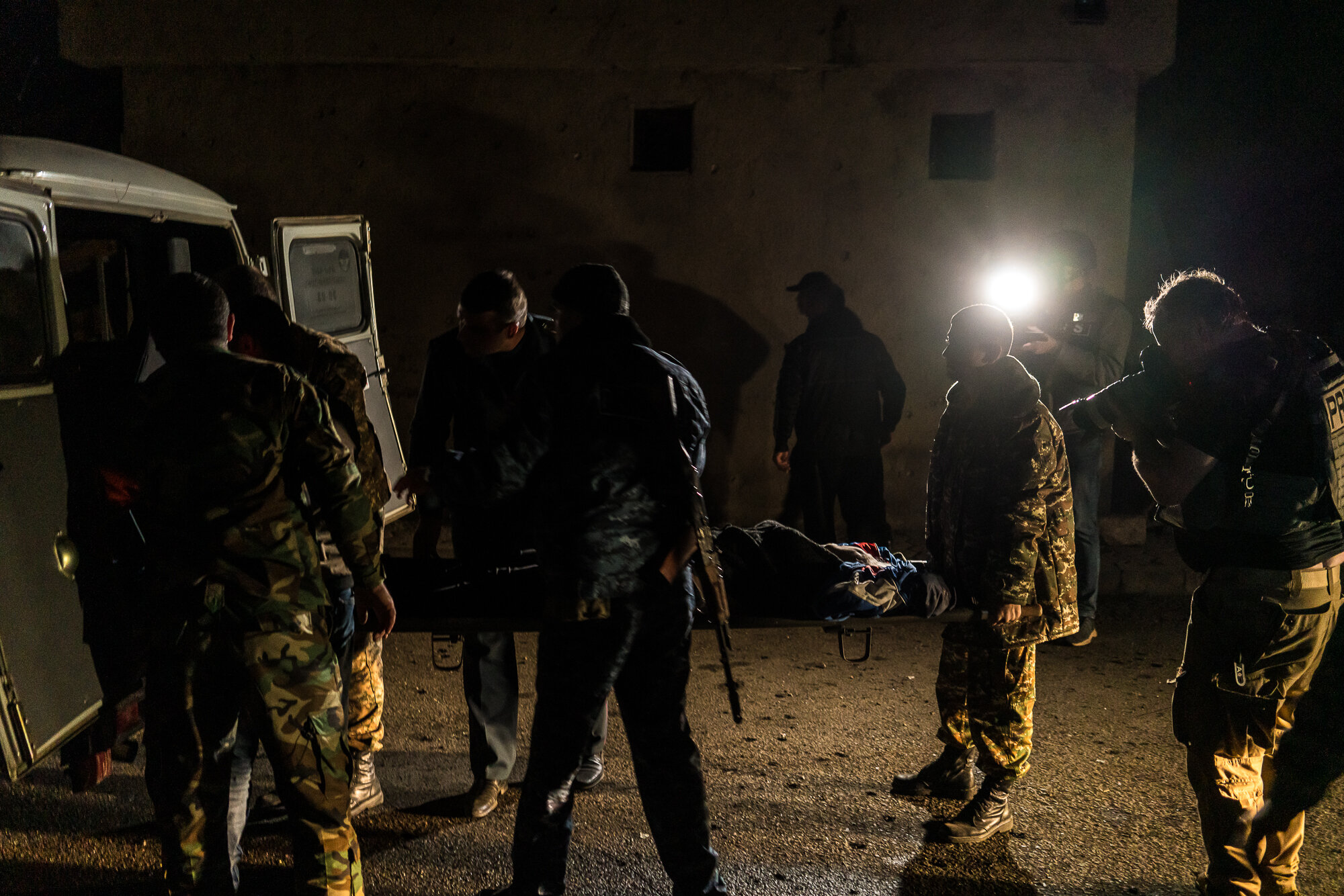
A wounded soldier is loaded into ambulance after an apartment building was shelled. Stepanakert, Nagorno-Karabakh. 2020.
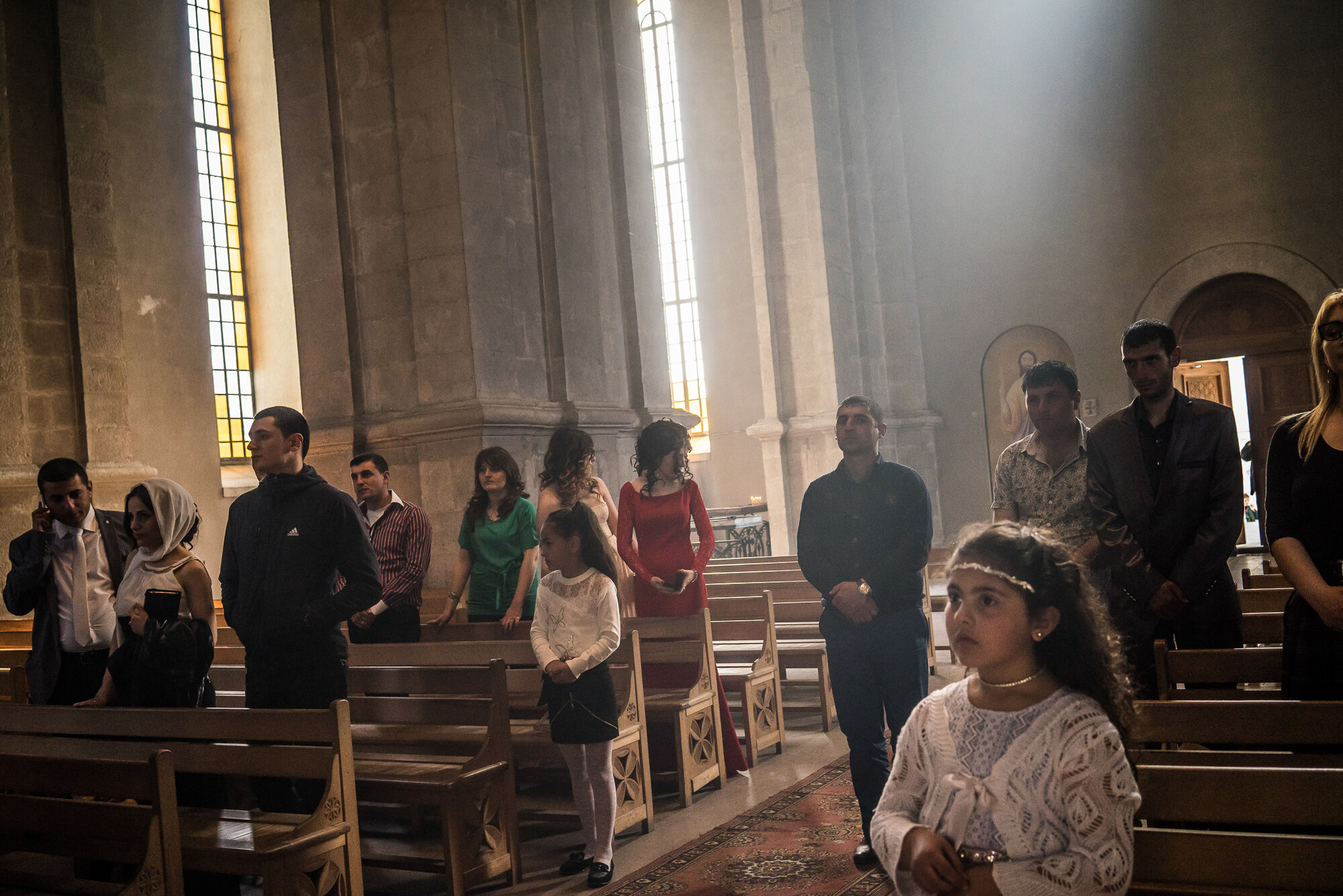
Guests attend the wedding of groom Davit Simonyan, 24, and bride Shogher Hovsepyan, 25, at Ghazanchetsots church. Shushi, Nagorno-Karabakh. 2015.
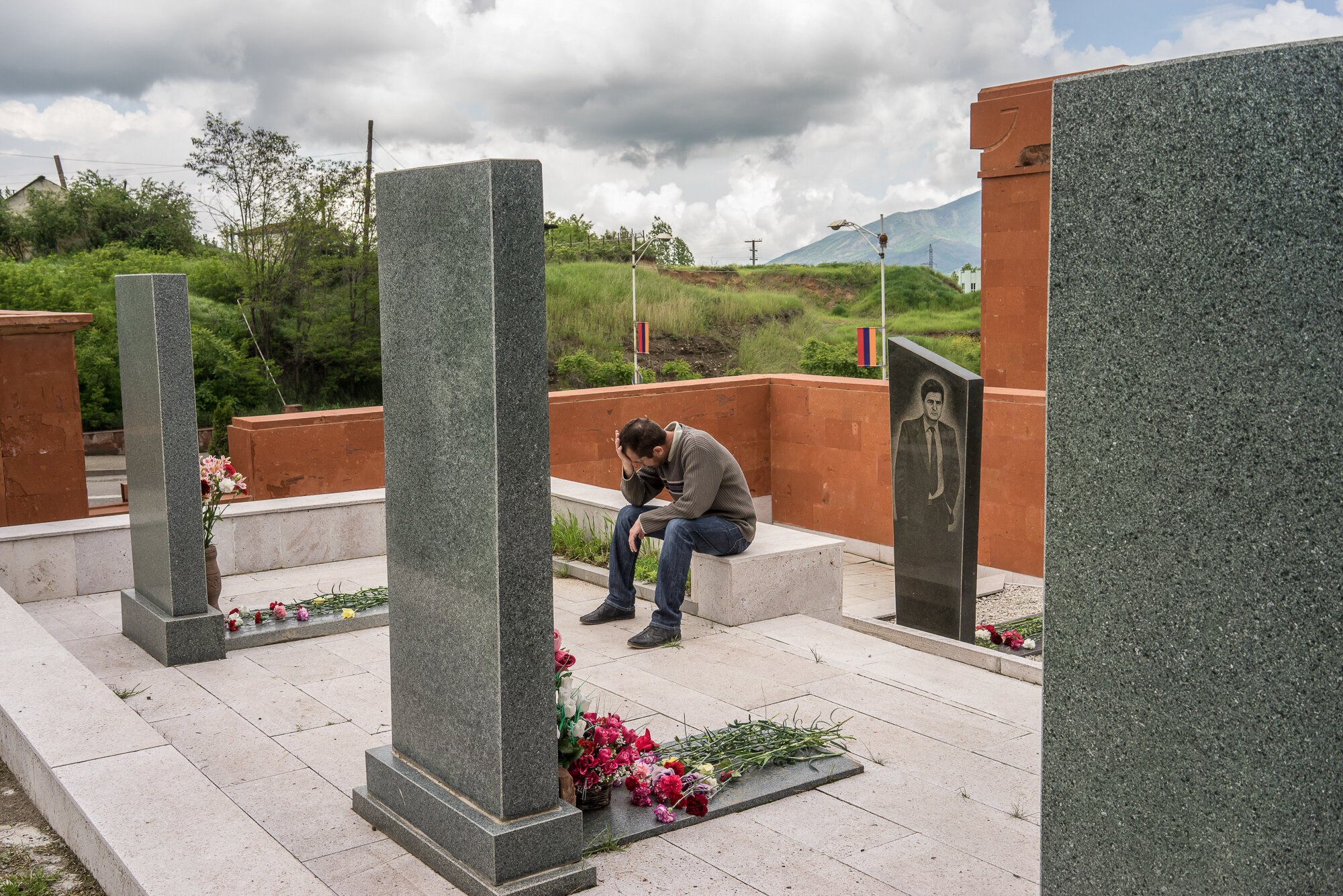
A man cries at the grave of a fighter killed in the 1990s war between Armenia and Azerbaijan following a ceremony commemorating both the victory over Nazi Germany in the Second World War as well as the fall of the strategic town of Shushi to Armenian forces. Stepanakert, Nagorno-Karabakh. 2016.

A woman in temporary housing in a camp for people displaced from Nagorno-Karabakh. Agdam region, Azerbaijan. 2006.
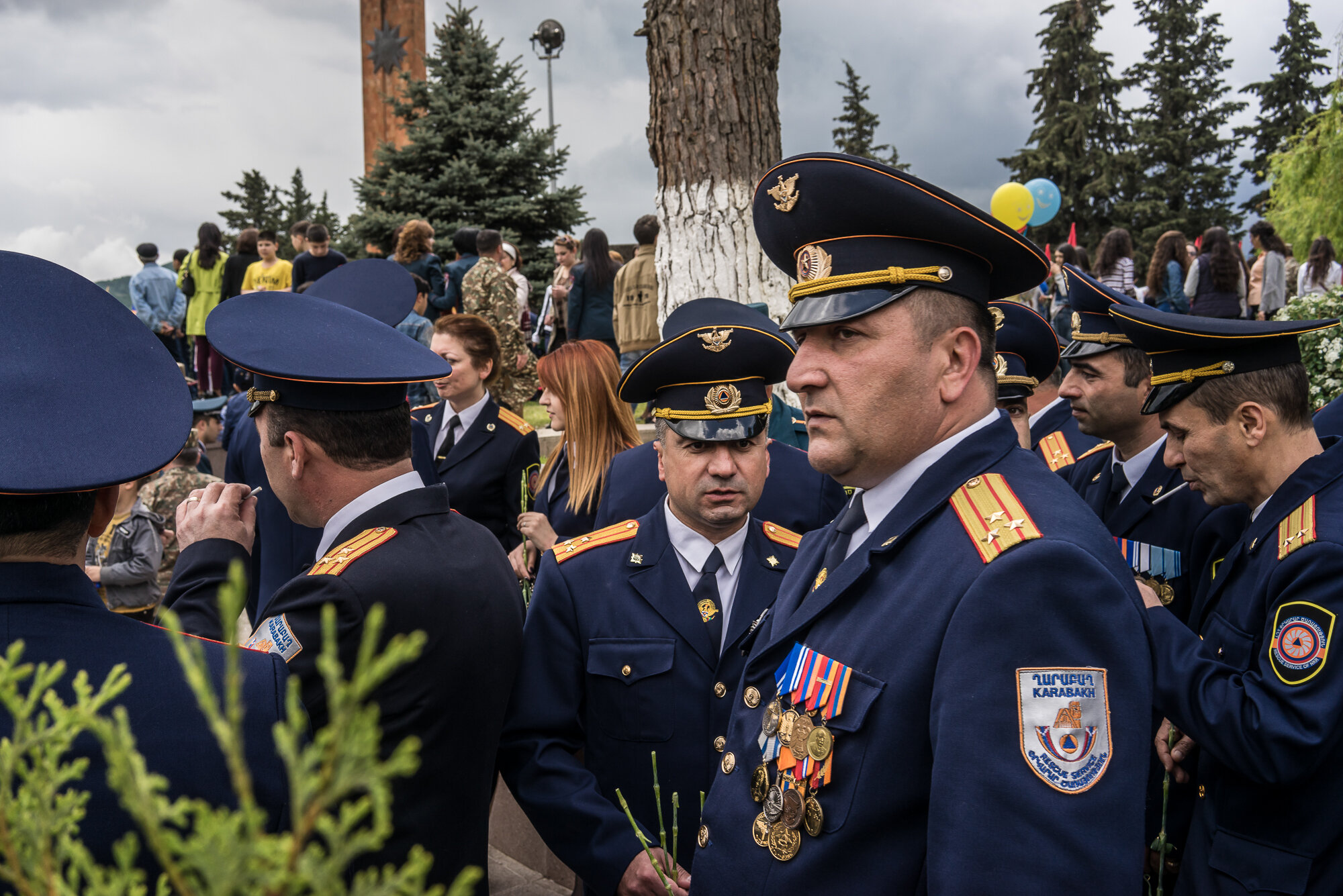
Military officers wait for the start of a ceremony commemorating both the victory over Nazi Germany in the Second World War as well as the fall of the strategic town of Shushi to Armenian forces. Stepanakert, Nagorno-Karabakh. 2016.
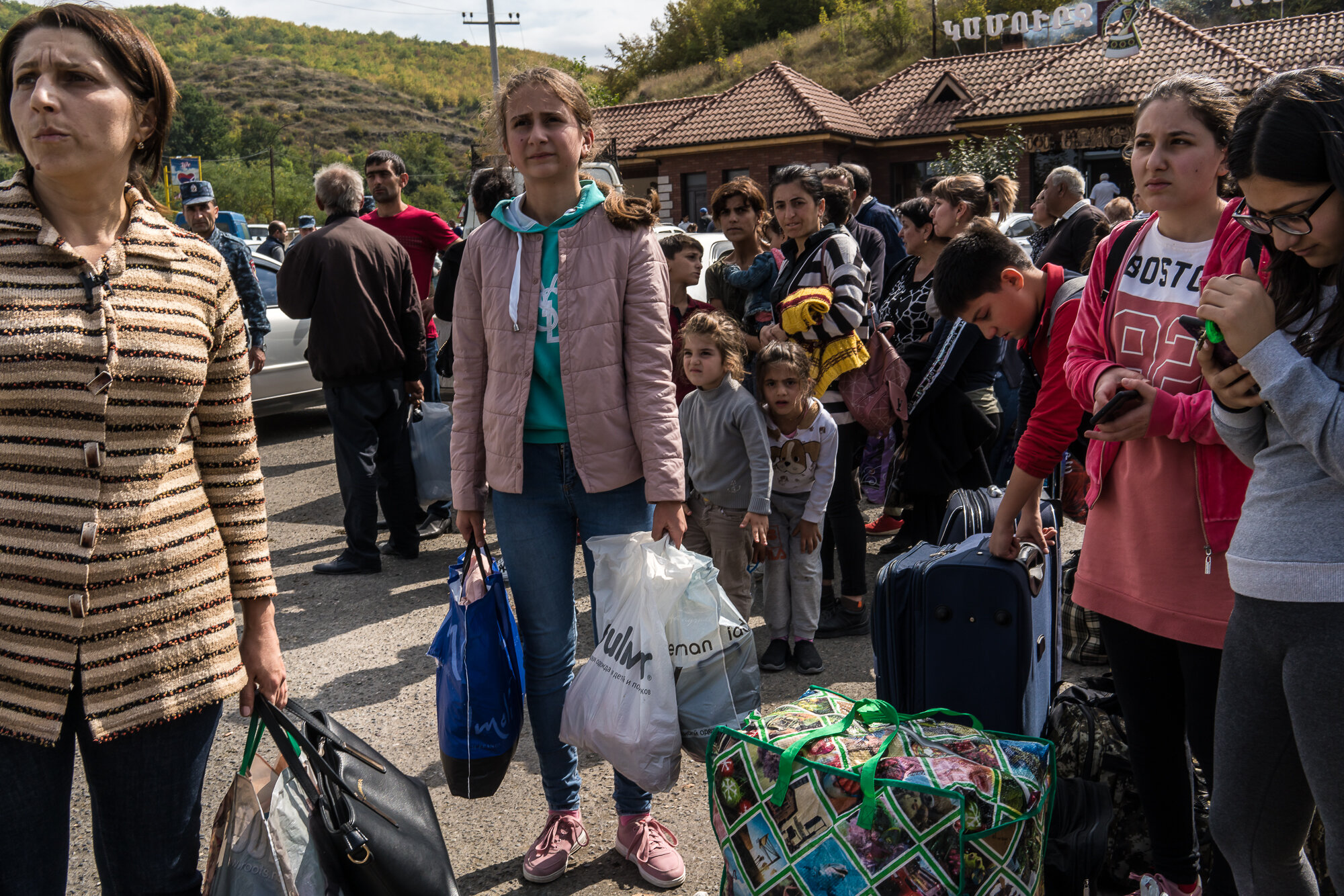
People gather at the edge of the city seeking rides in the direction of Yerevan, away from fighting. Stepanakert, Nagorno-Karabakh. 2020.
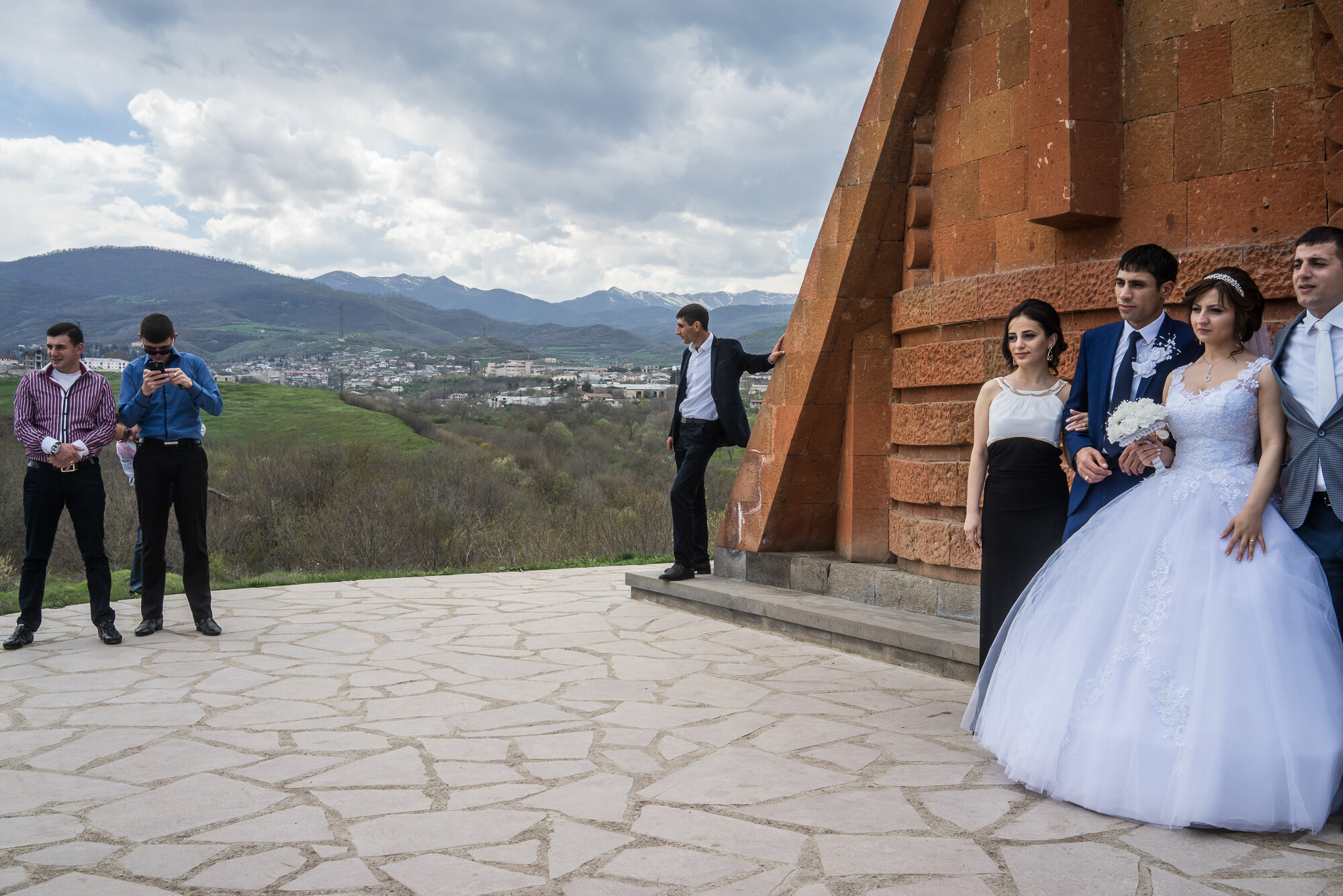
Groom Davit Simonyan, 24, and bride Shogher Hovsepyan, 25, take wedding photos with family and friends at the Tatik Papik monument, a popular symbol of Nagorno-Karabakh. Stepanakert, Nagorno-Karabakh. 2015.
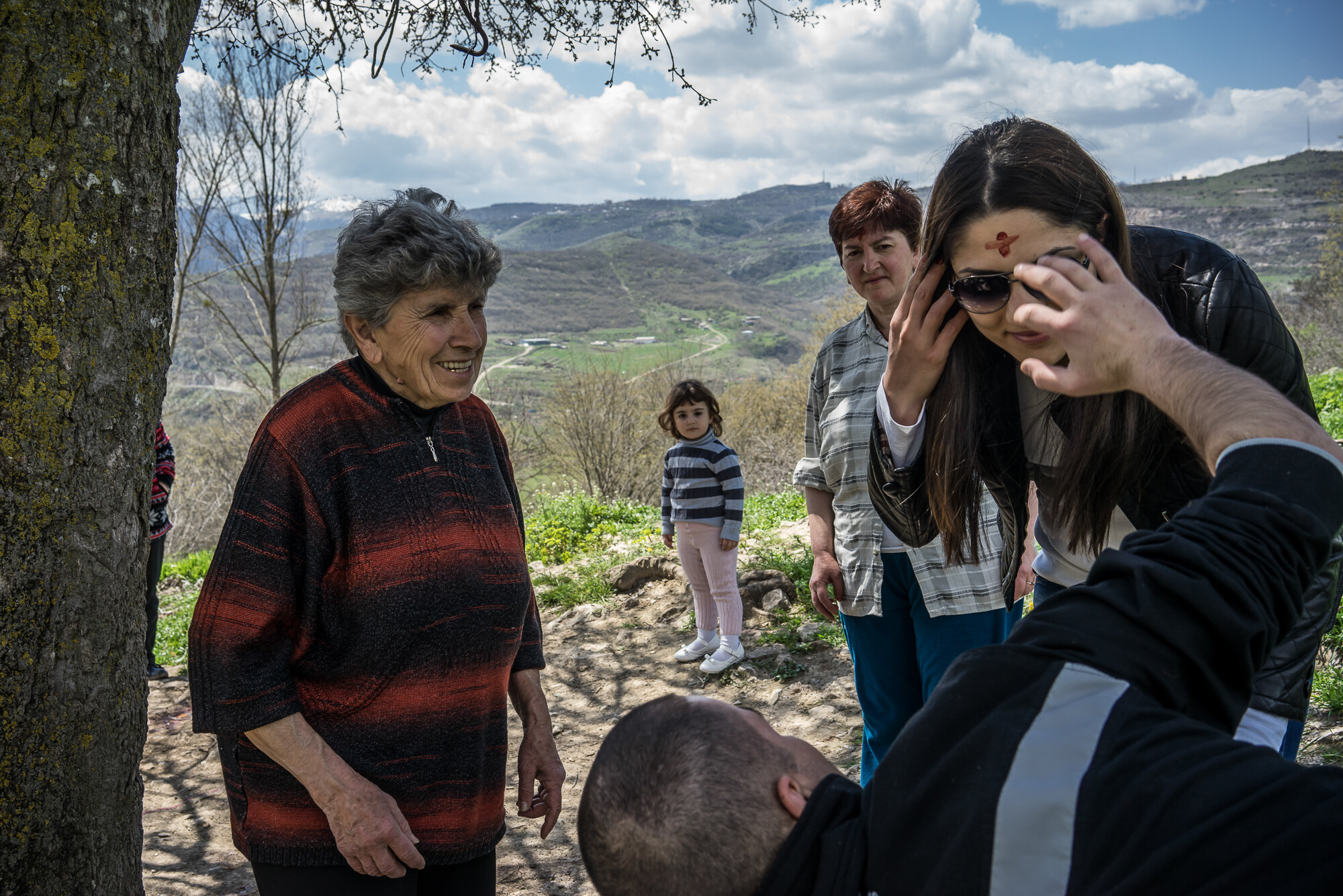
Members of the Abrahamyan family sacrifice a chicken, the blood of which is used to paint a cross on the forehead, to bring good fortune at the sacred site of Surb Saribek. Karashen, Nagorno-Karabakh. 2015.
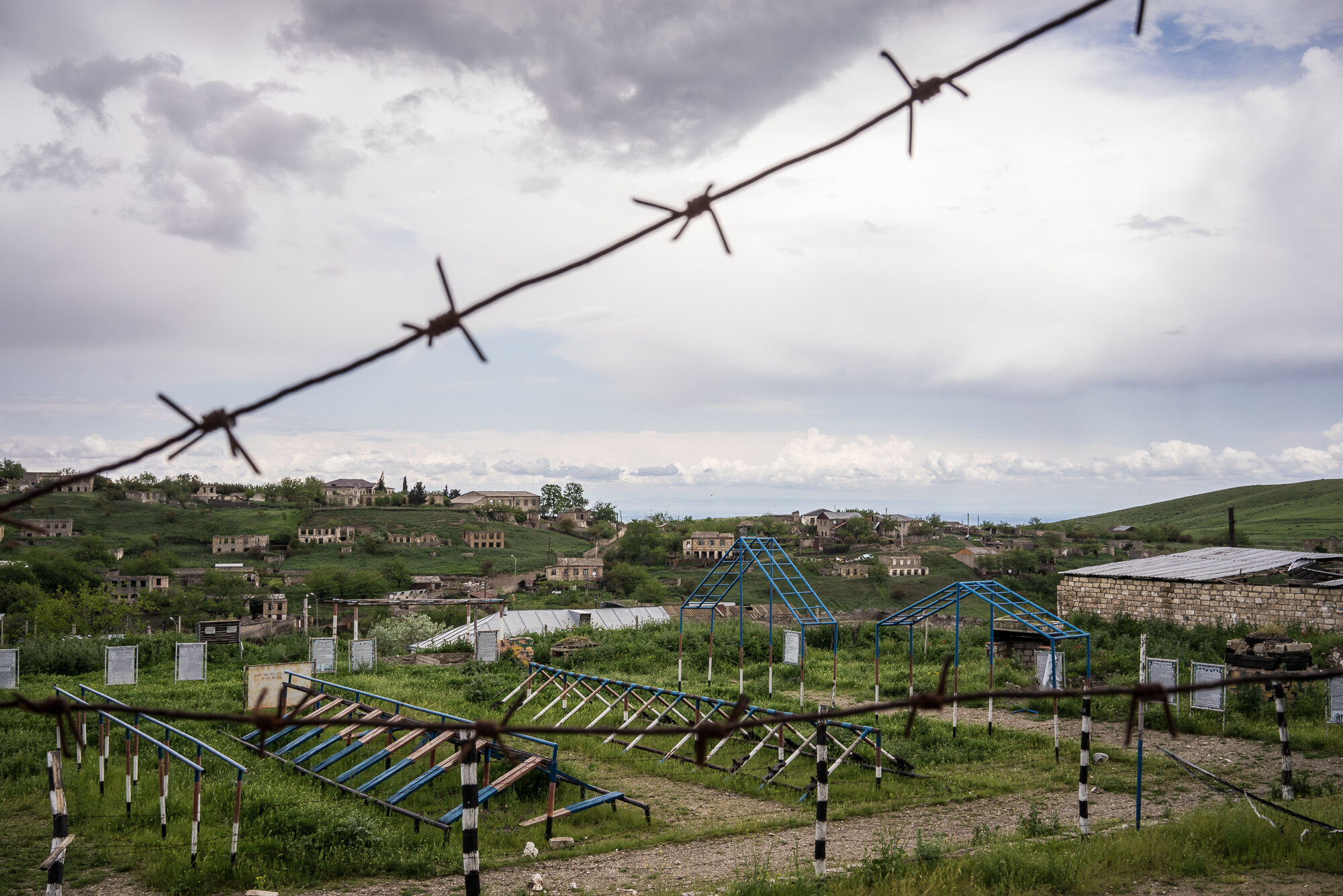
A view of Talish, Nagorno-Karabakh. The entire village was evacuated of civilians due to nearby fighting in 2016, and in 2020 the village has been taken repeatedly by each side. 2016.
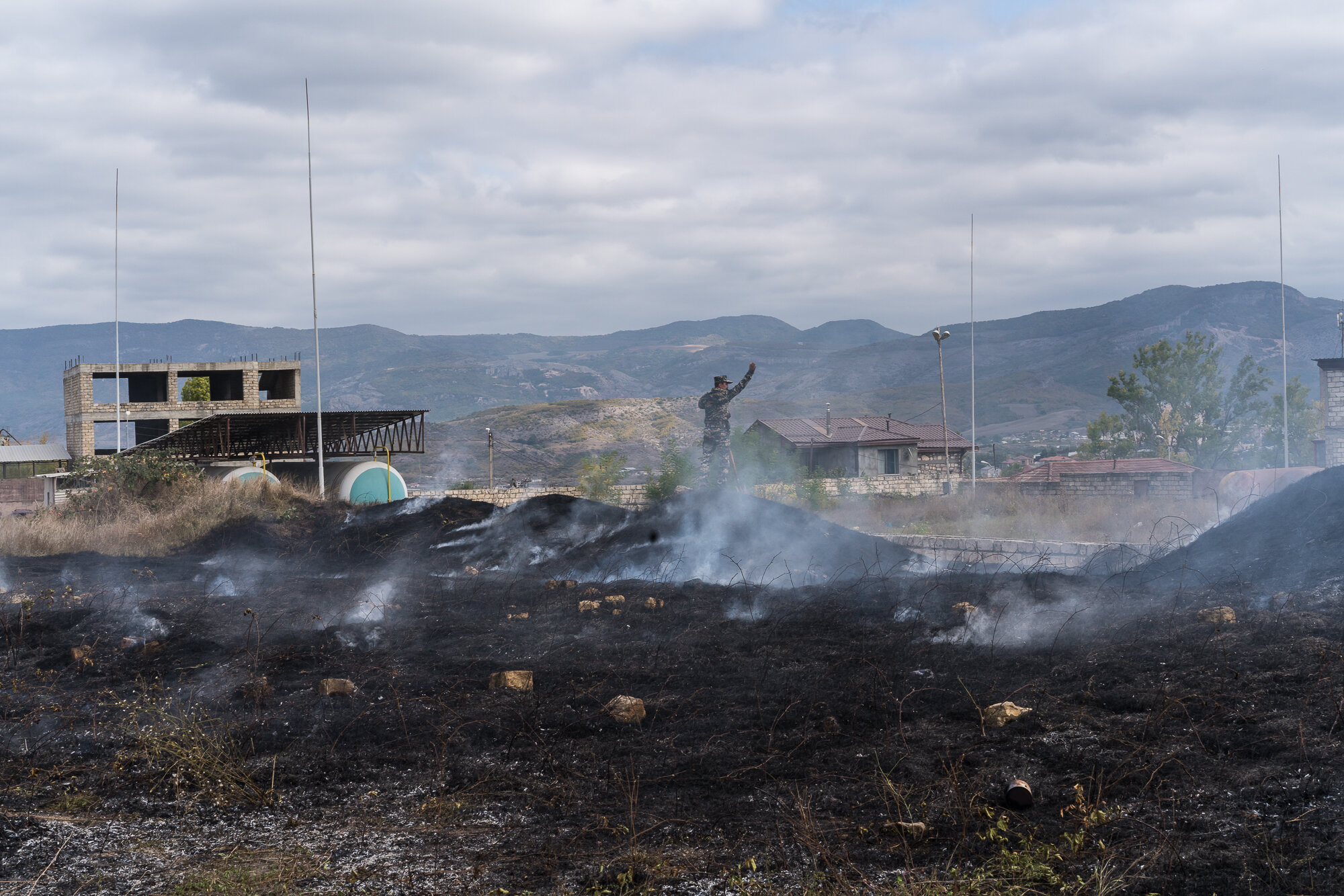
An emergency services member stands atop the site of a grass fire started by a bomb that fell nearby. Stepanakert, Nagorno-Karabakh. 2020.
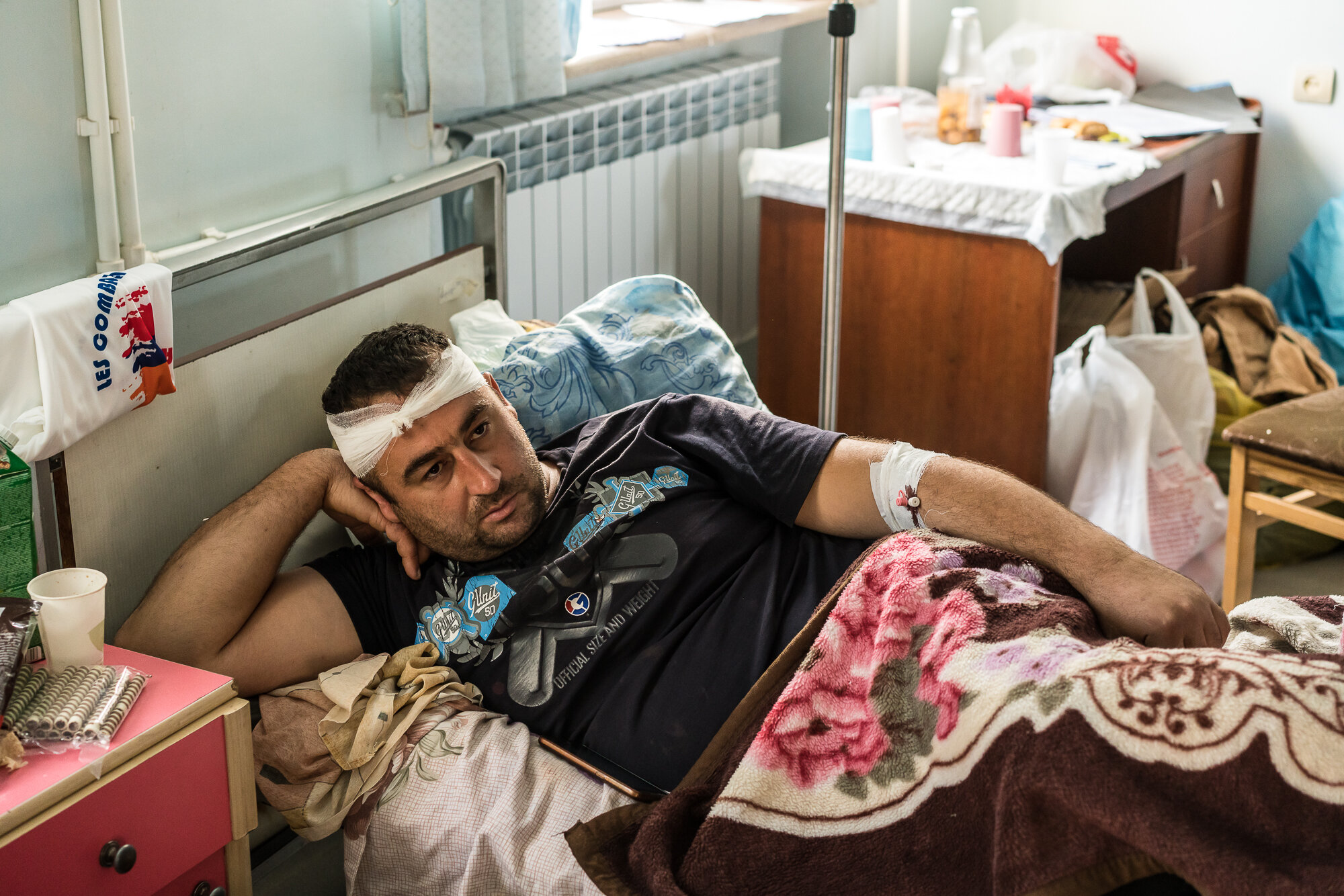
Aghajan, an Armenian soldier wounded in fighting the previous day, lies in his hospital bed. Stepanakert, Nagorno-Karabakh. 2020.
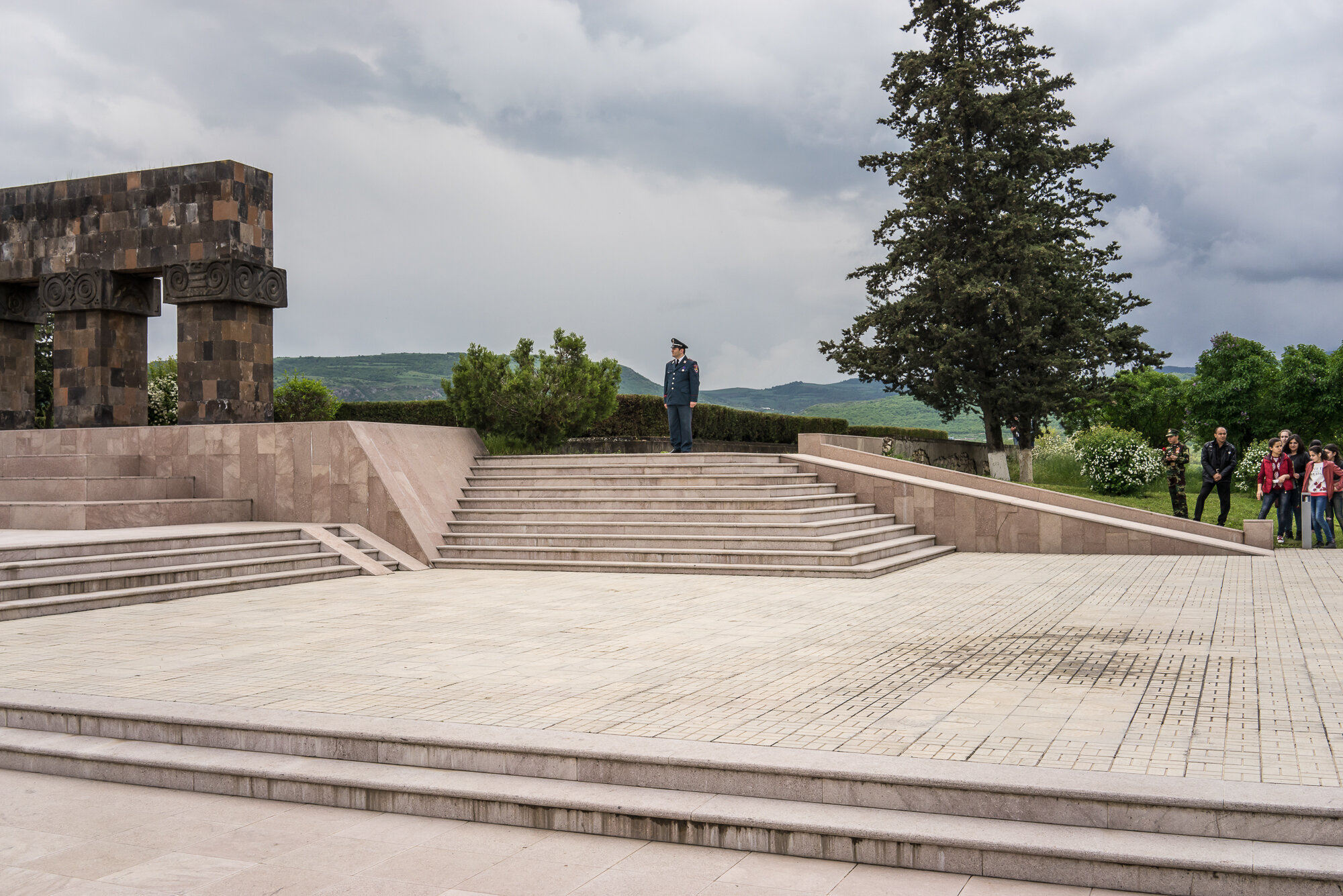
A scene during a ceremony commemorating both the victory over Nazi Germany in the Second World War as well as the fall of the strategic town of Shushi to Armenian forces. Stepanakert, Nagorno-Karabakh. 2016
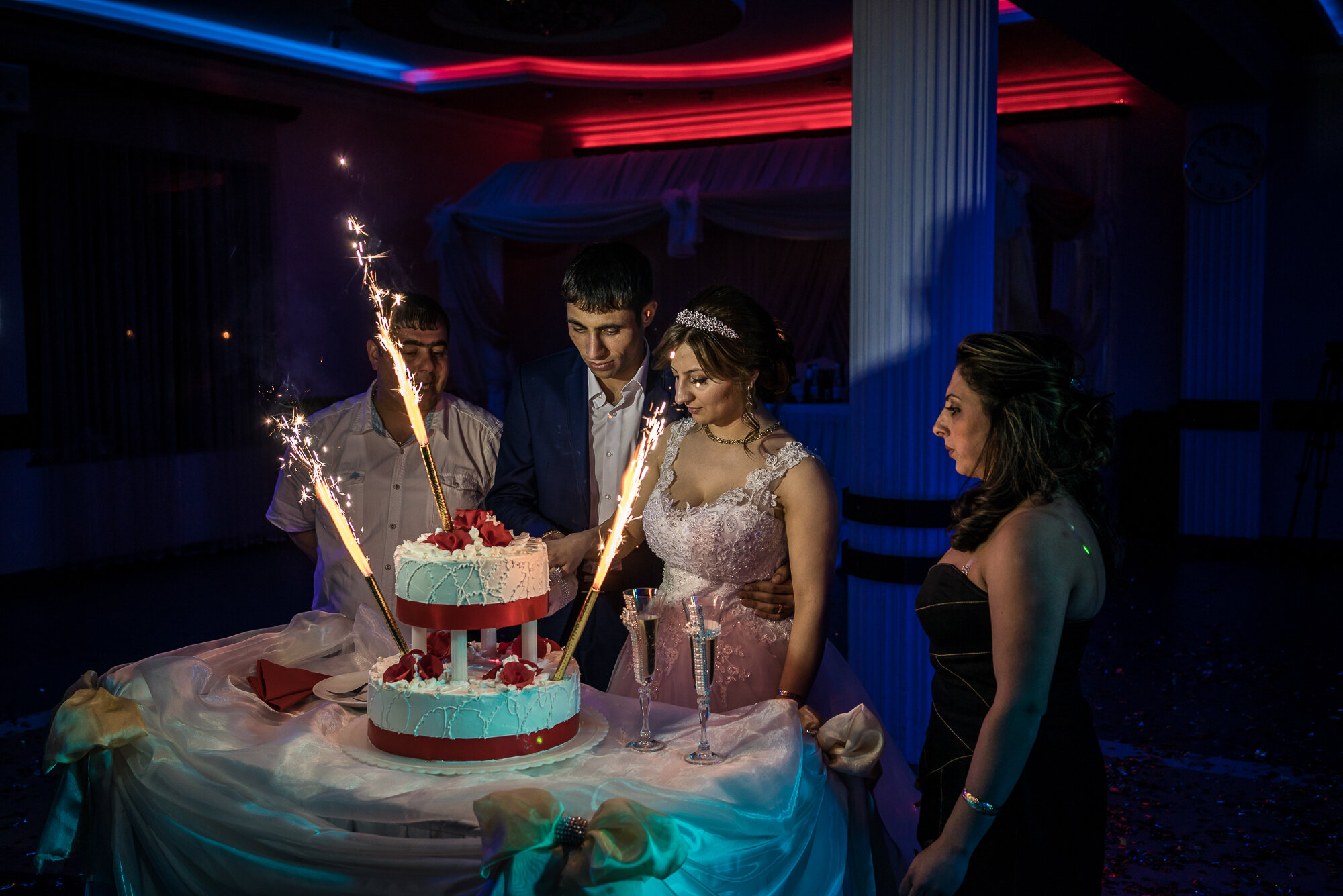
Groom Davit Simonyan, 24, and bride Shogher Hovsepyan, 25, prepare to cut the cake at their wedding reception. Stepanakert, Nagorno-Karabakh. 2015.

Armen Ussoyan, a deminer with the charity HALO Trust, works to clear a minefield. Hagob Kamari, Nagorno-Karabakh. 2015.
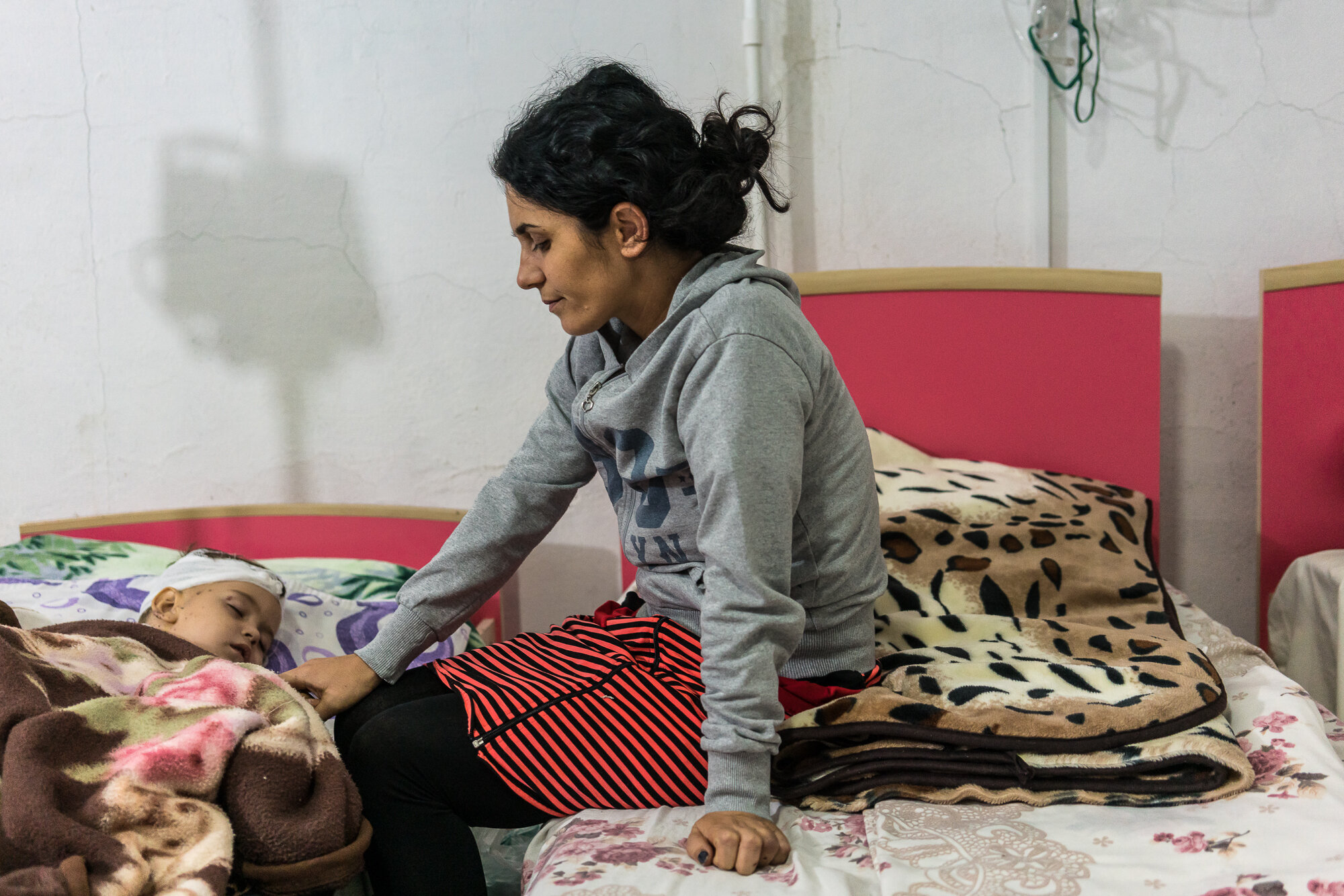
Anahit Gevorgyan sits with her son Artsvik, 2, after he was injured and her eight-year-old daughter killed by fighting in their village of Martuni two days earlier. Stepanakert, Nagorno-Karabakh. 2020.
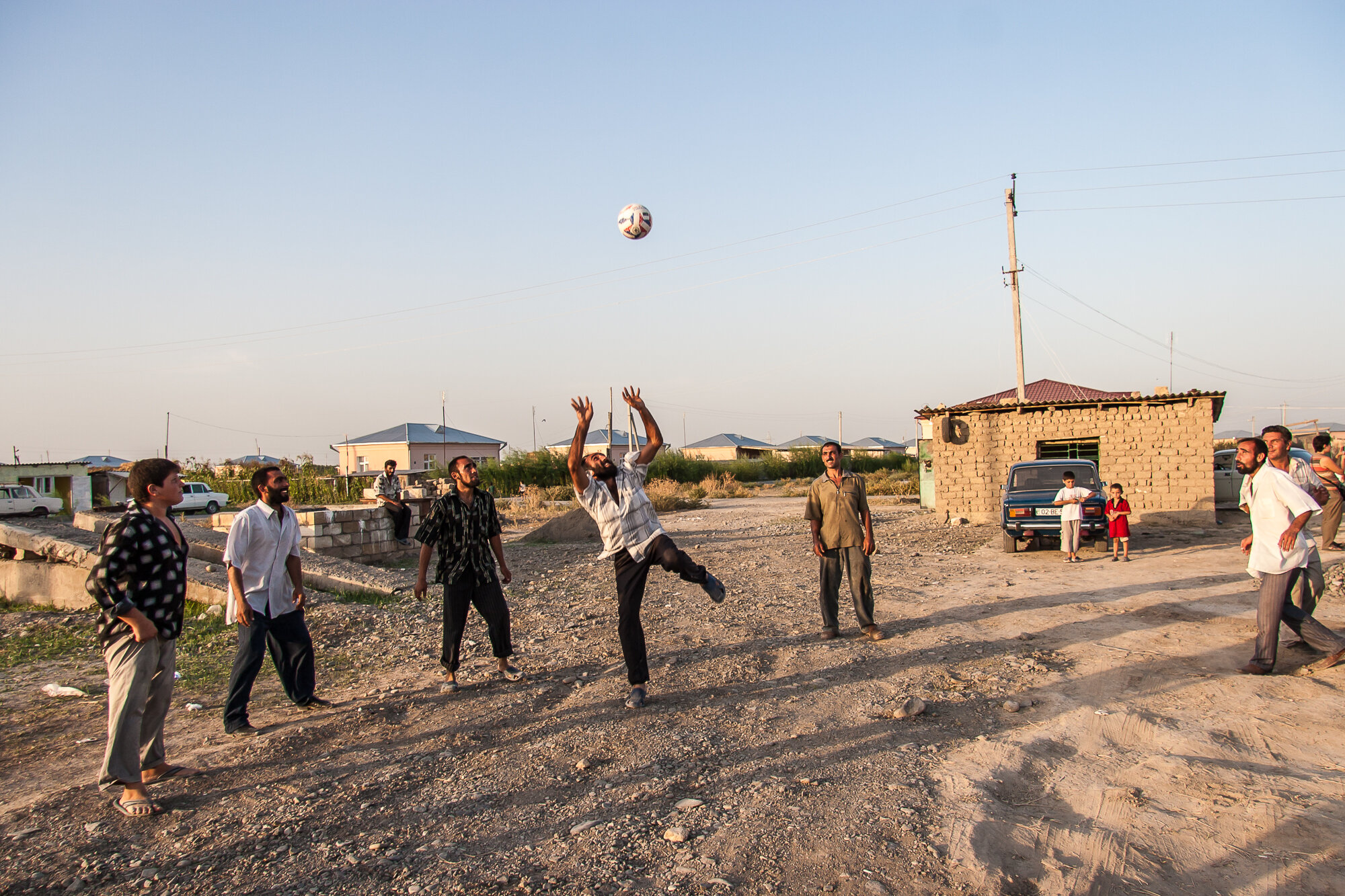
Men hit a soccer ball in a camp for internally displaced people from Nagorno-Karabakh. Agdam region, Azerbaijan. 2006.
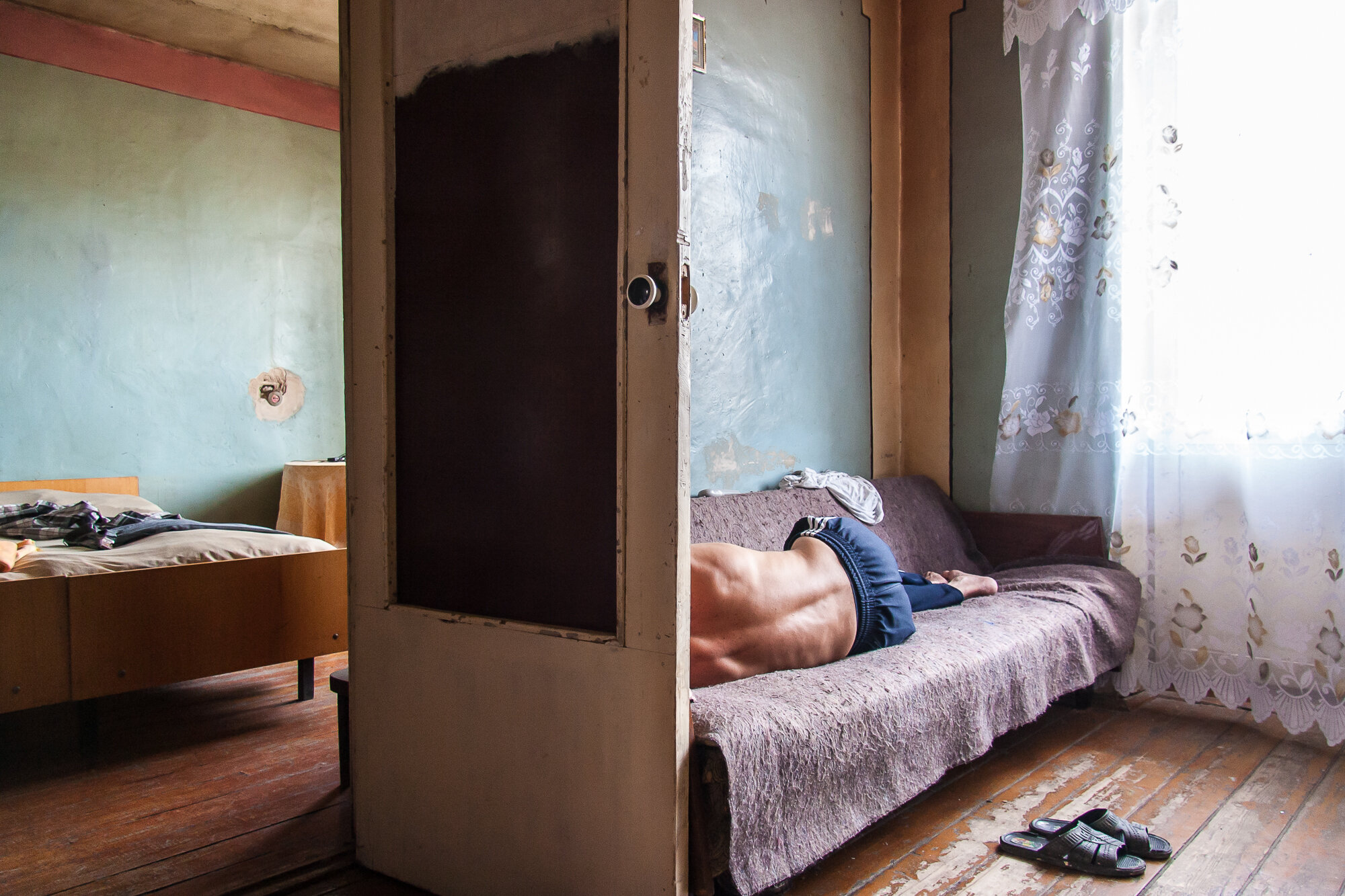
Aksenia Avanessian and her husband left Baku as refugees in 1988. They went to Yerevan, then Stepanakert, and finally this abandoned flat, which they were able to get for free from the government. Shushi, Nagorno-Karabakh. 2006.
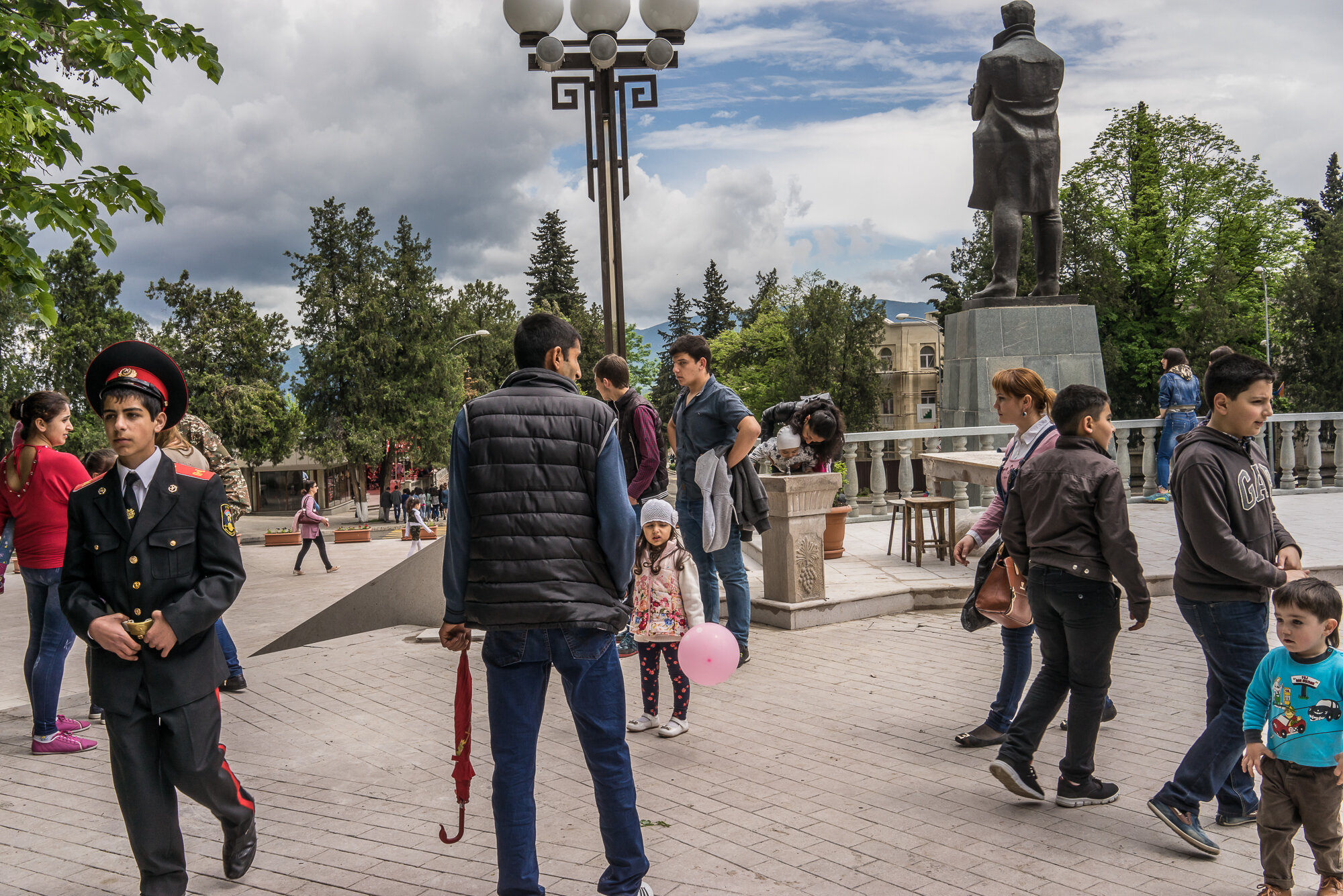
People gather in a local park to enjoy the warm weather following a ceremony commemorating both the victory over Nazi Germany in the Second World War as well as the fall of the strategic town of Shushi to Armenian forces. Stepanakert, Nagorno-Karabakh. 2016
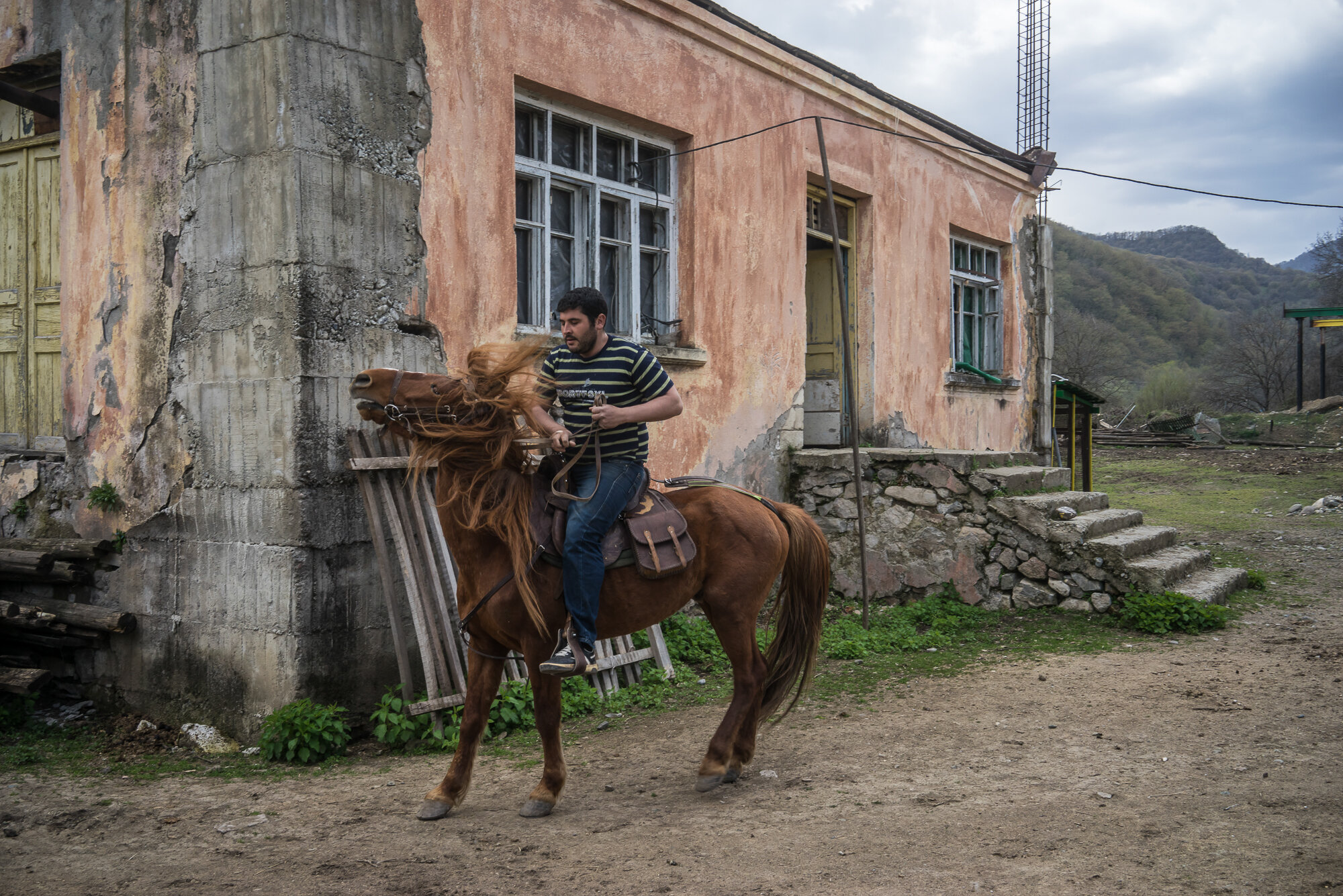
David Baghdasaryan rides a Karabakh breed of horse. Vank, Nagorno-Karabakh. 2015.
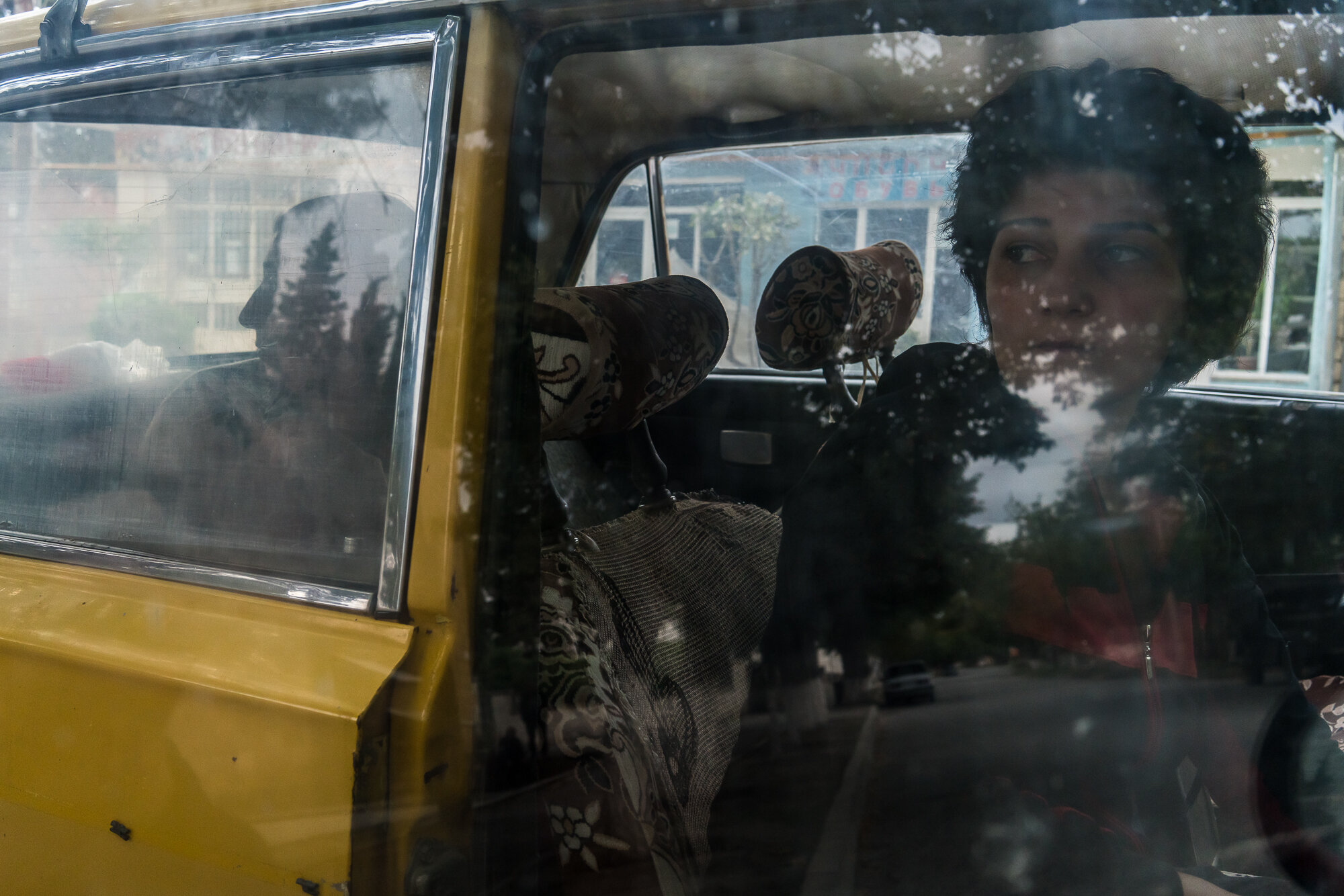
Anush Poghosyan (L) and Karina Aghabekyan (R) sit in the car as they prepare to leave their front-line village for Yerevan after heavy shelling several days earlier. Martuni, Nagorno-Karabakh. 2020.
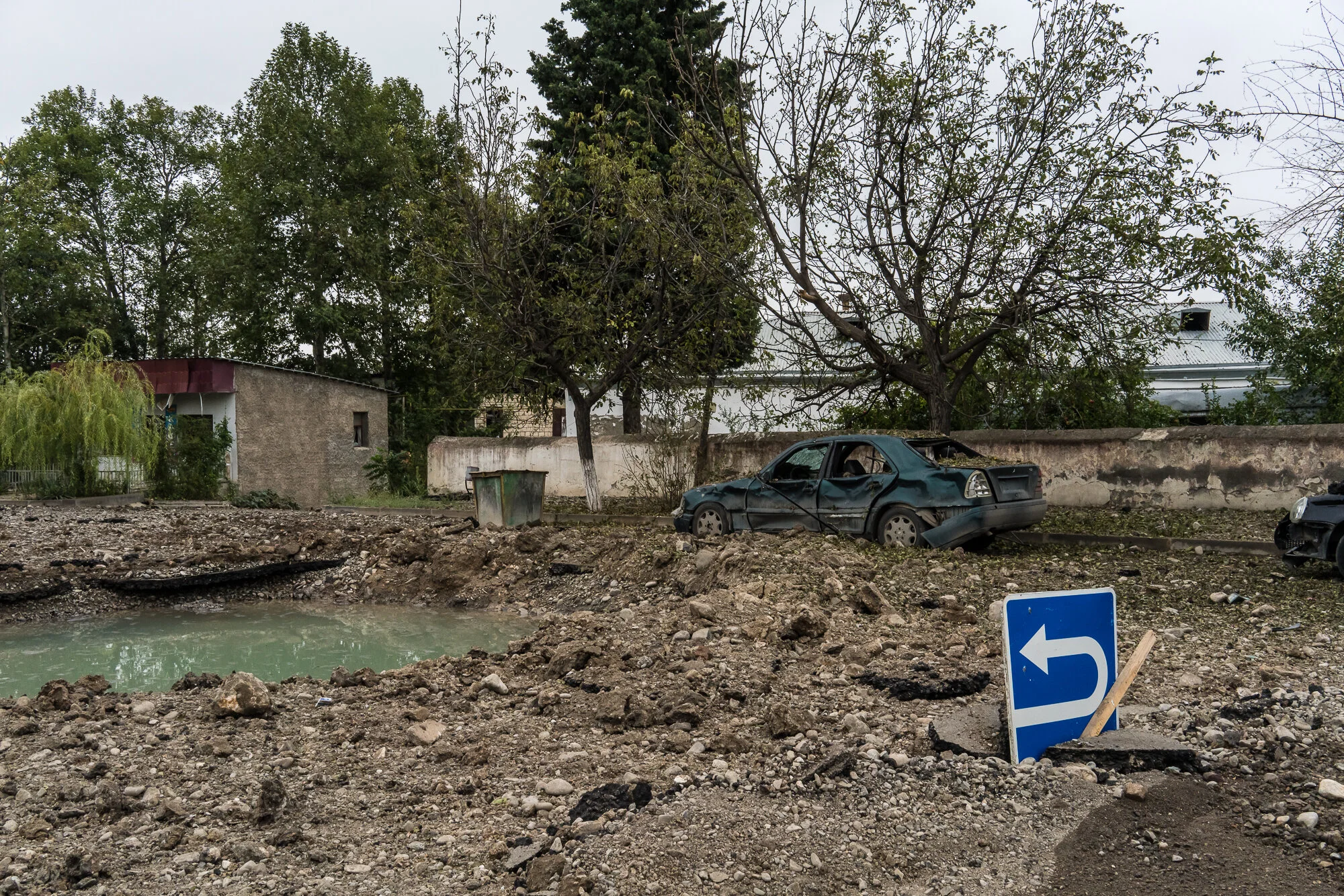
Destroyed cars and a crater in the road that are the result of a reported drone strike the previous day. Martakert, Nagorno-Karabakh. 2020.
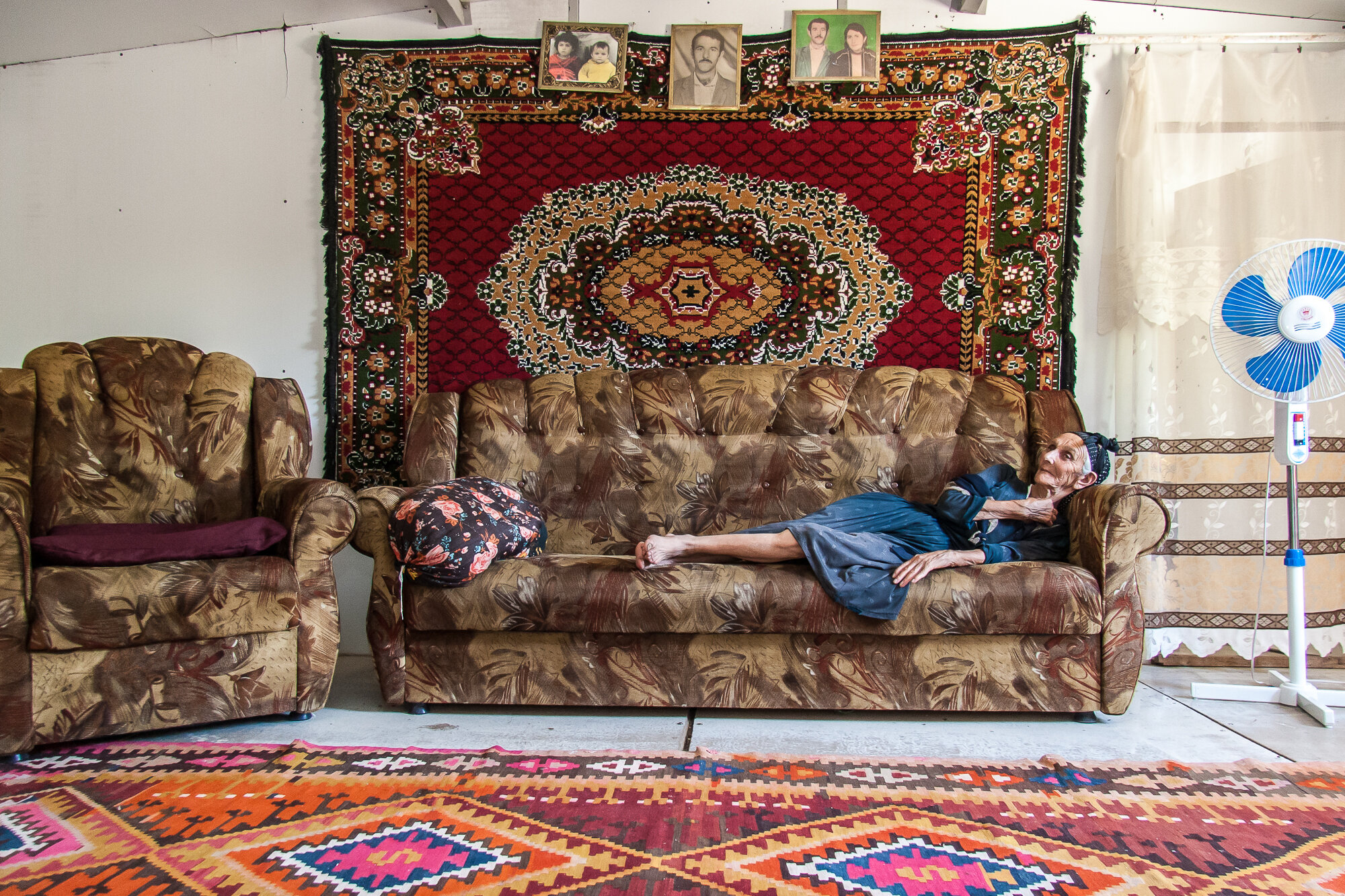
An old woman stops for a rest in her home in the Chalabixan camp for internally displaced people from Nagorno-Karabakh. Sheki area, Azerbaijan. 2006.
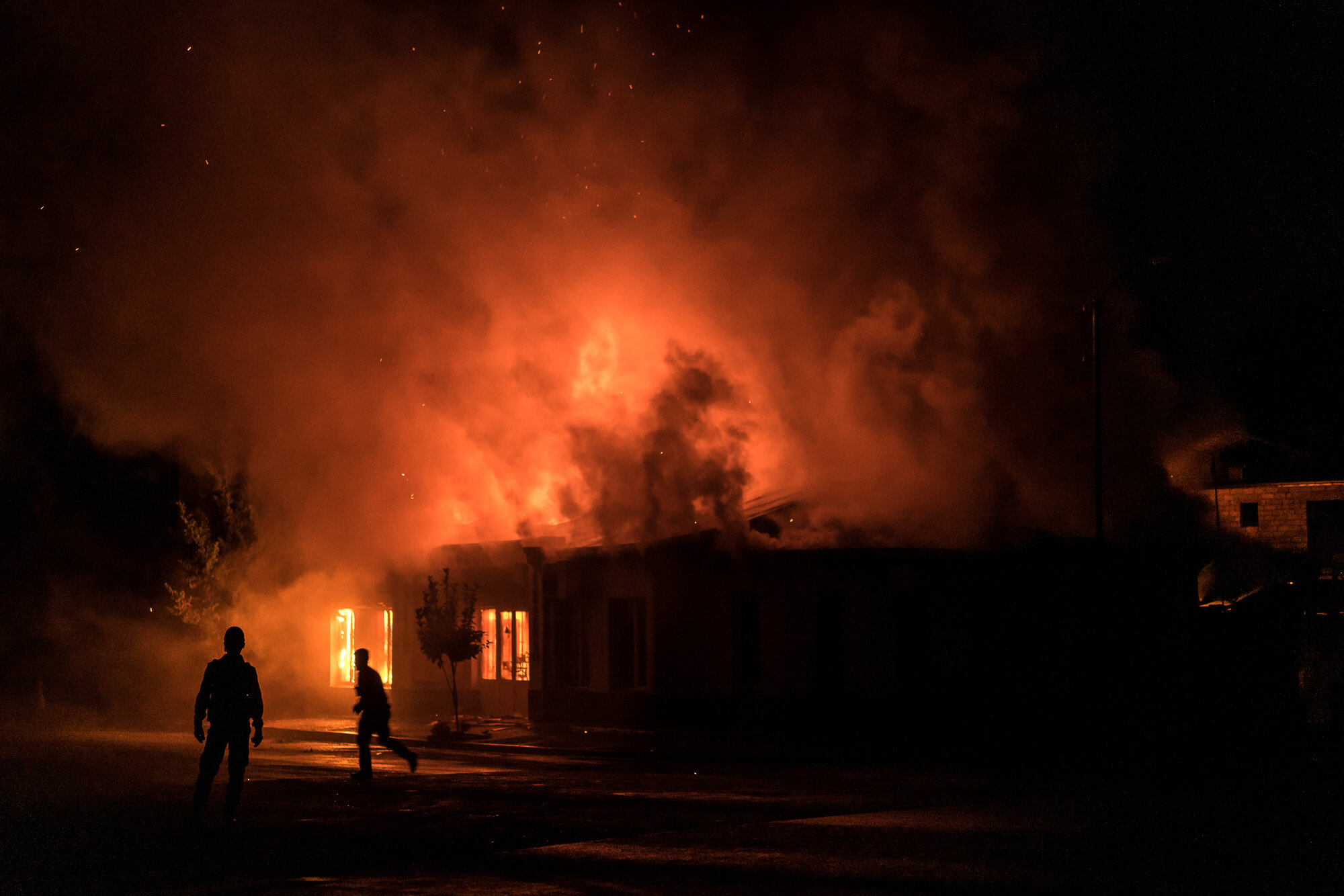
A fire burns in a hardware store after a rocket attack caused the building to catch fire. Stepanakert, Nagorno-Karabakh. 2020.
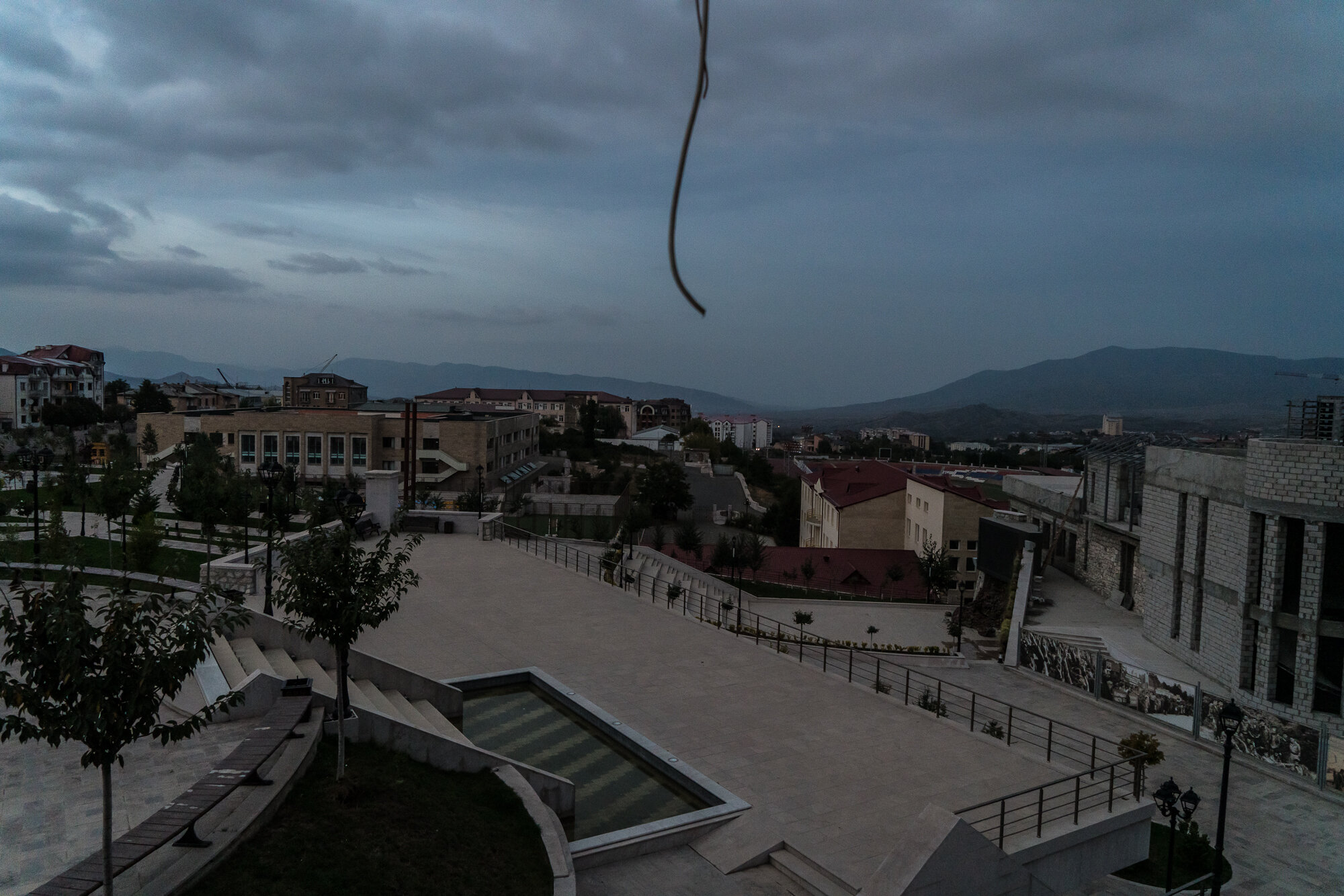
A view of the city. Stepanakert, Nagorno-Karabakh. 2020.
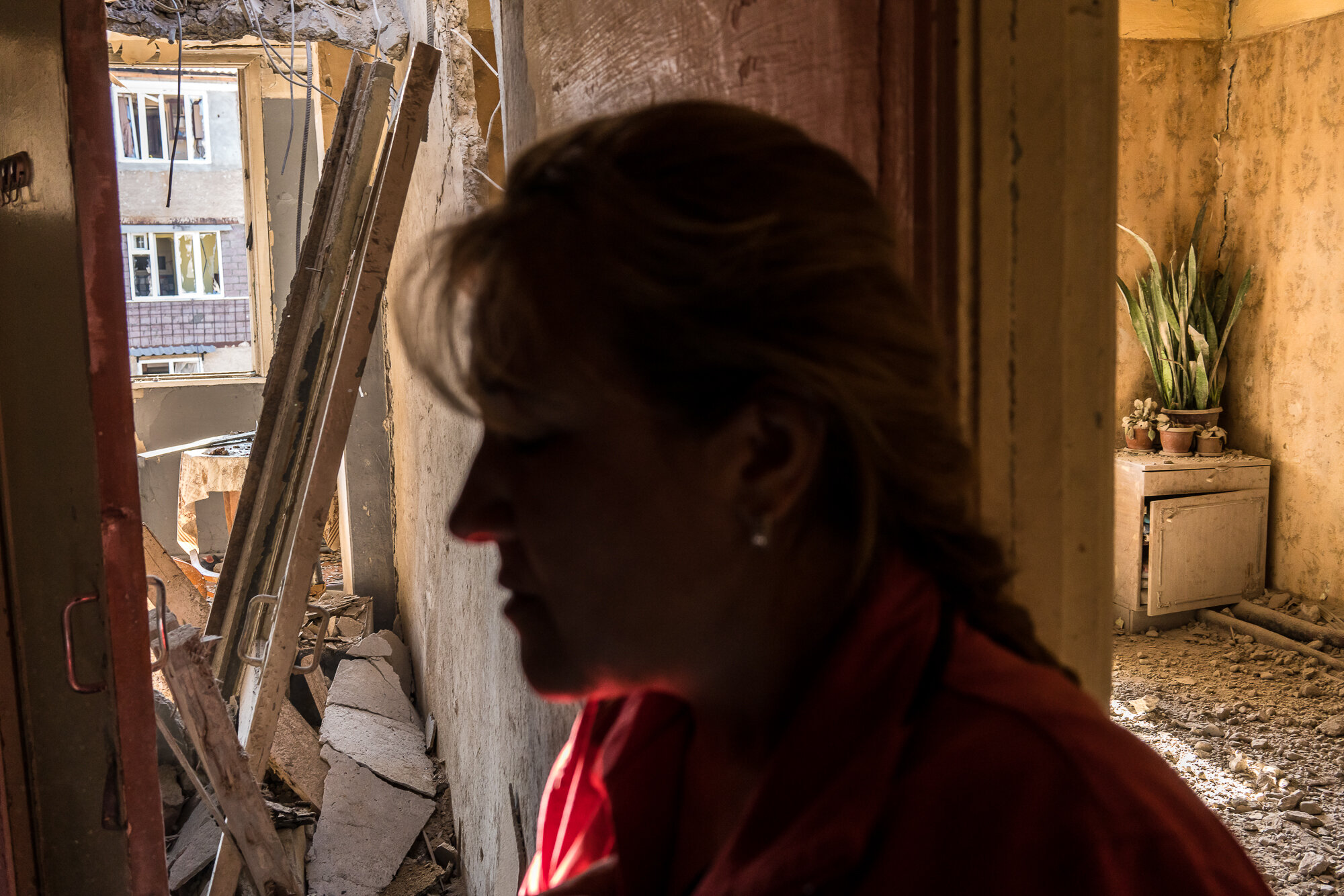
Alina Shumanyan reacts to the destruction in her neighbor's apartment building after it was shelled the previous evening. Stepanakert, Nagorno-Karabakh. 2020.
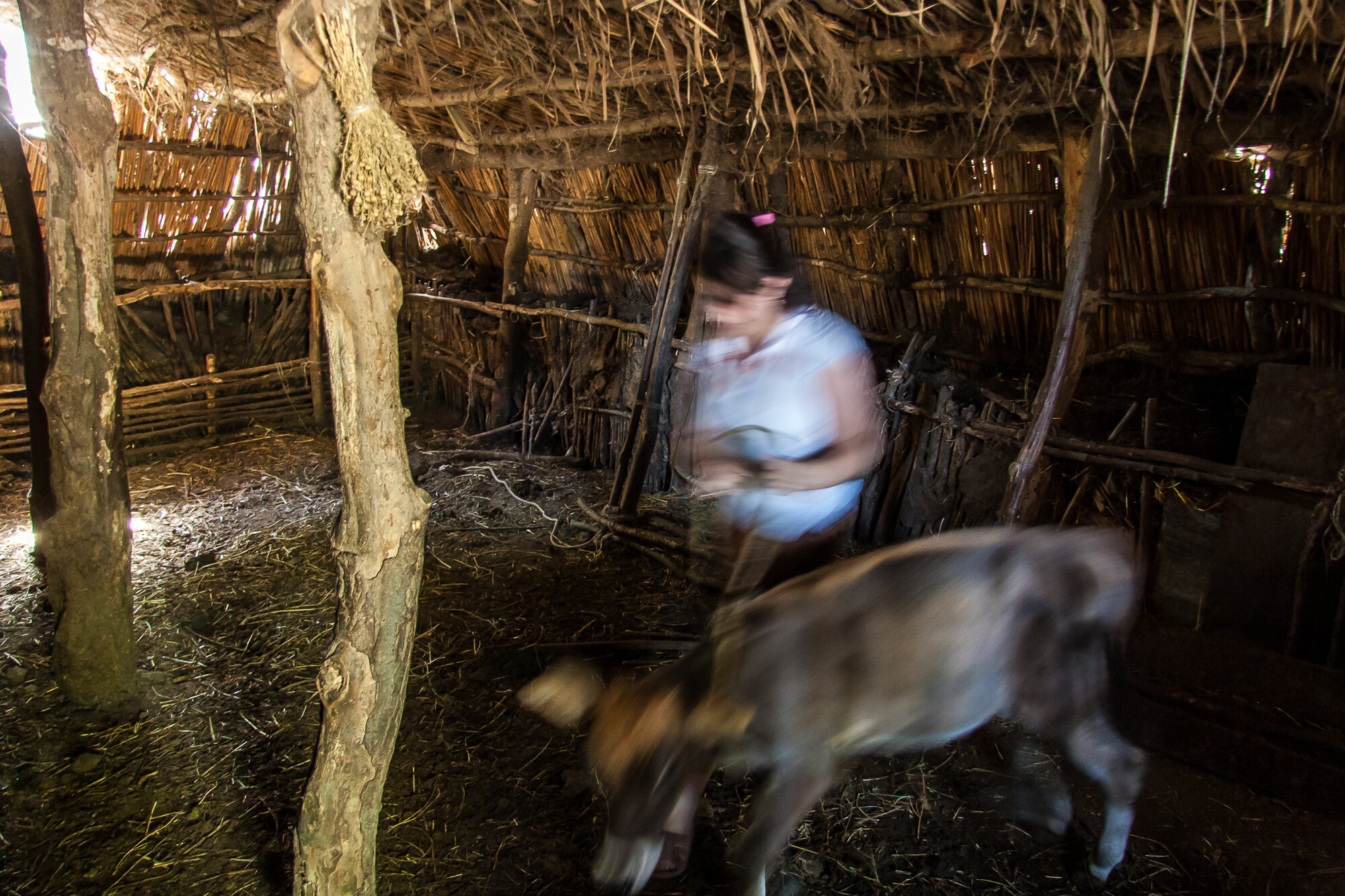
A woman with her cow in the Chalabixan camp for internally displaced people from Nagorno-Karabakh. Many IDPs and refugees used to live in cities but are forced to adopt a rural lifestyle to survive. Sheki area, Azerbaijan. 2006.
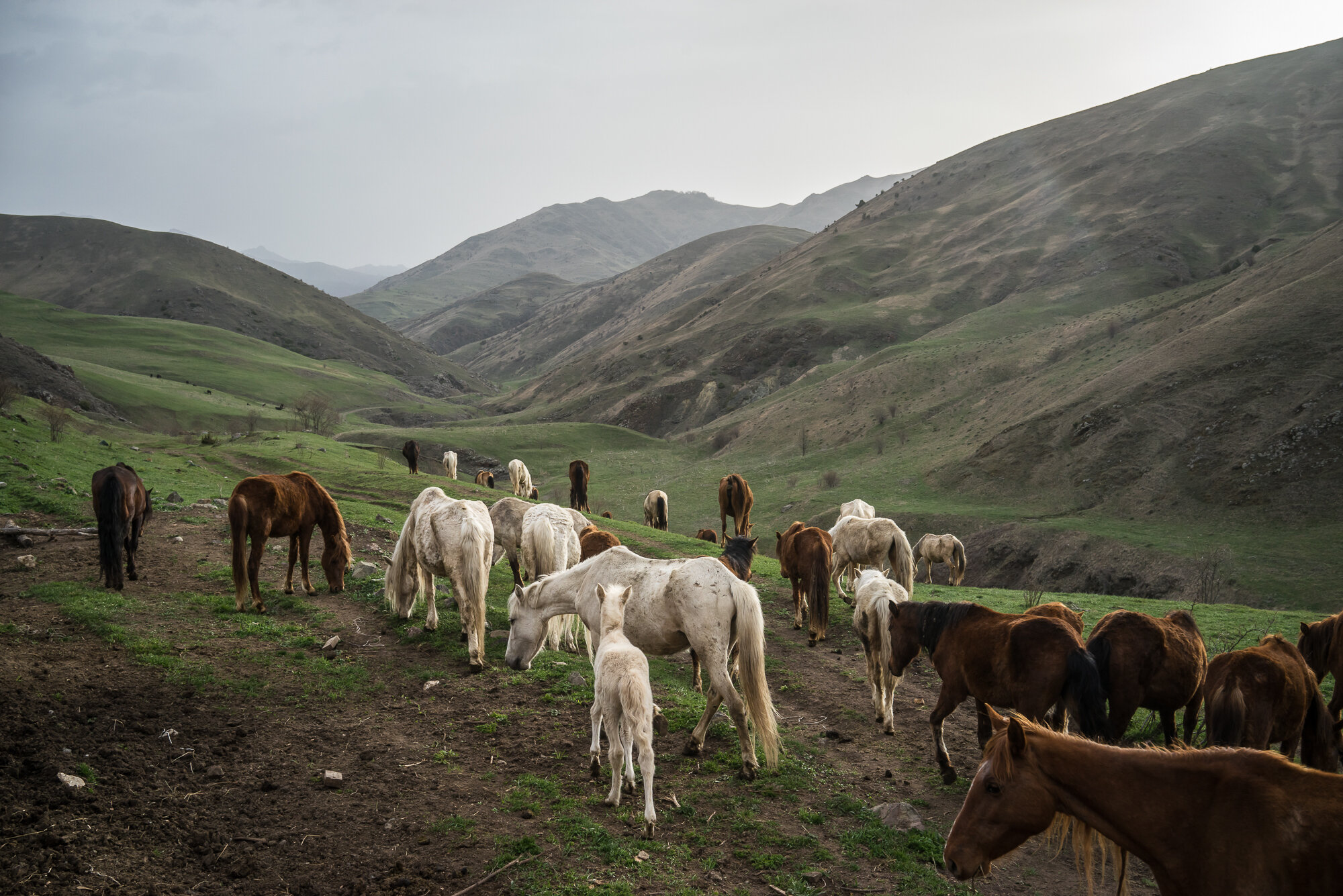
A herd of horses, the brown ones of which are Karabakh horses, a breed originally developed in the region which is now faced with extinction, are let out to pasture on a farm in the mountains. Vank, Nagorno-Karabakh. 2015.
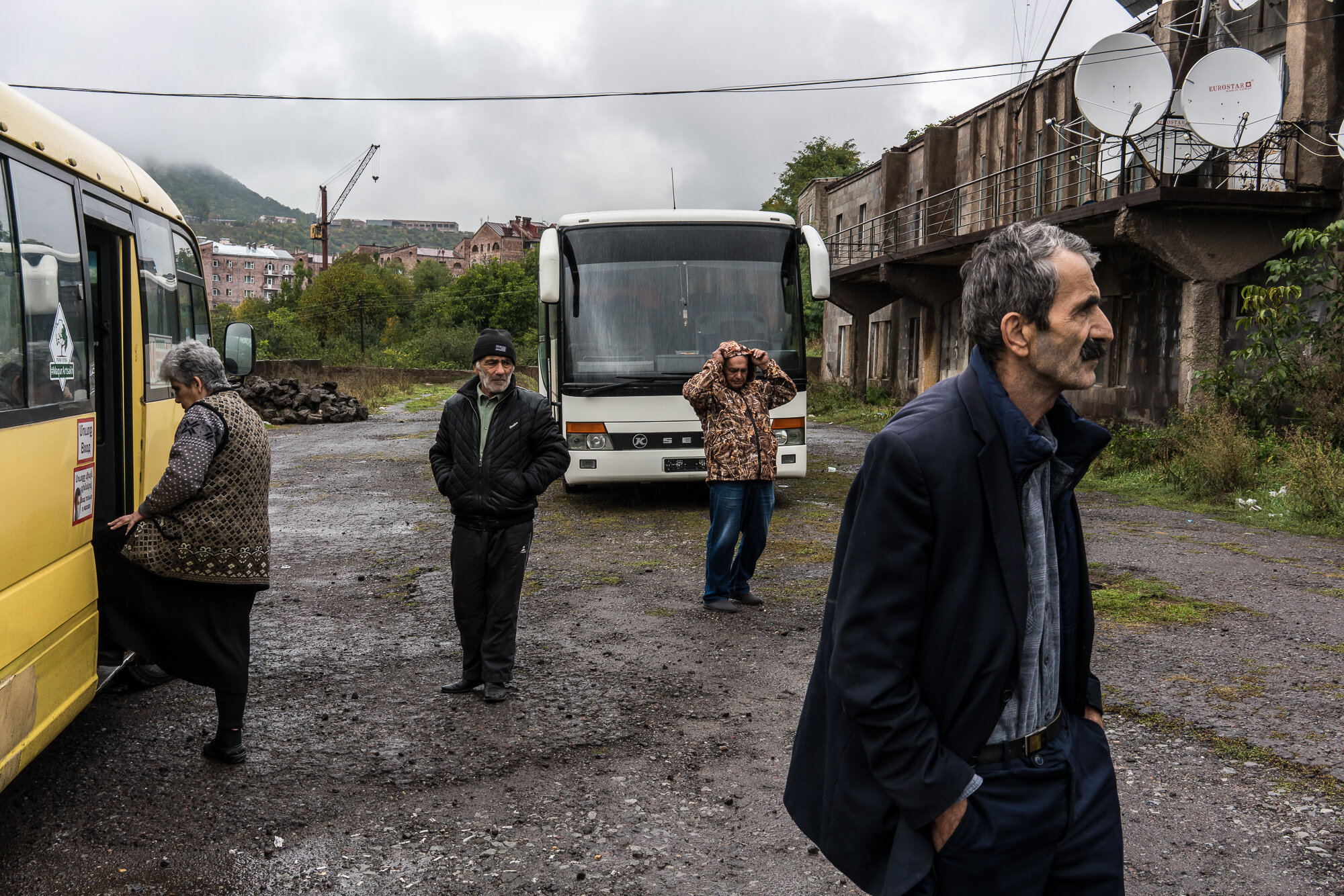
People wait for the arrival of civilians leaving fighting in Nagorno-Karabakh. Goris, Armenia. 2020.

A team of experts from the charity HALO Trust clears a field of unexploded cluster munitions dropped by Azerbaijani forces in fighting the previous month. Mokhratagh, Nagorno-Karabakh. 2016.

Lina Nersesyan in her village house. Before the war 70 families lived here; Sktaturashen was heavily bombed and now, she and her husband are the only ones who haven't left. Sktaturashen, Nagorno-Karabakh. 2006.
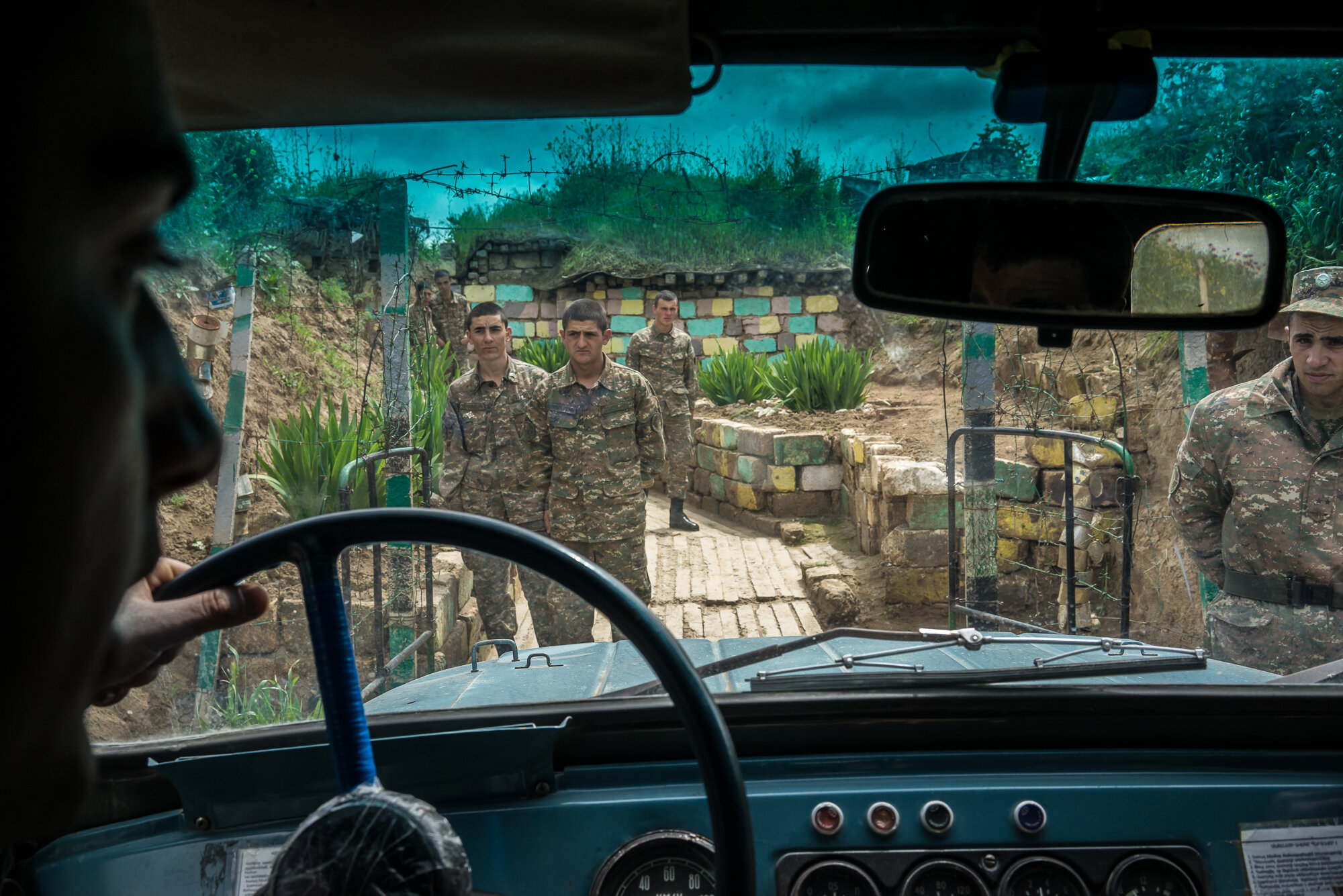
Members of the armed forces of Nagorno-Karabakh at their post along the line of contact with Azerbaijani forces in the eastern direction. Near Agdam, Nagorno-Karabakh. 2015.
2006 - present
Nagorno-Karabakh is a small mountainous territory in the South Caucasus caught in limbo. Officially part of Azerbaijan, it has functioned as a de facto part of Armenia since the two former Soviet republics fought a bloody war over the land as the Soviet Union fell apart. While it has declared itself an independent country, and fields a president, foreign ministry, and military, no other countries recognize it as such.
A 1994 ceasefire that ended the first war was shattered in late September as fighting flared again. Decades of military investment and a strategic alliance with Turkey provided Azerbaijan with a decisive edge, allowing it to recapture much of the territory it previously lost. After six weeks and thousands of deaths, another ceasefire was declared, cementing Azerbaijan's gains and prompting a crisis of confidence in Armenia. A lasting peace seems further away than ever.